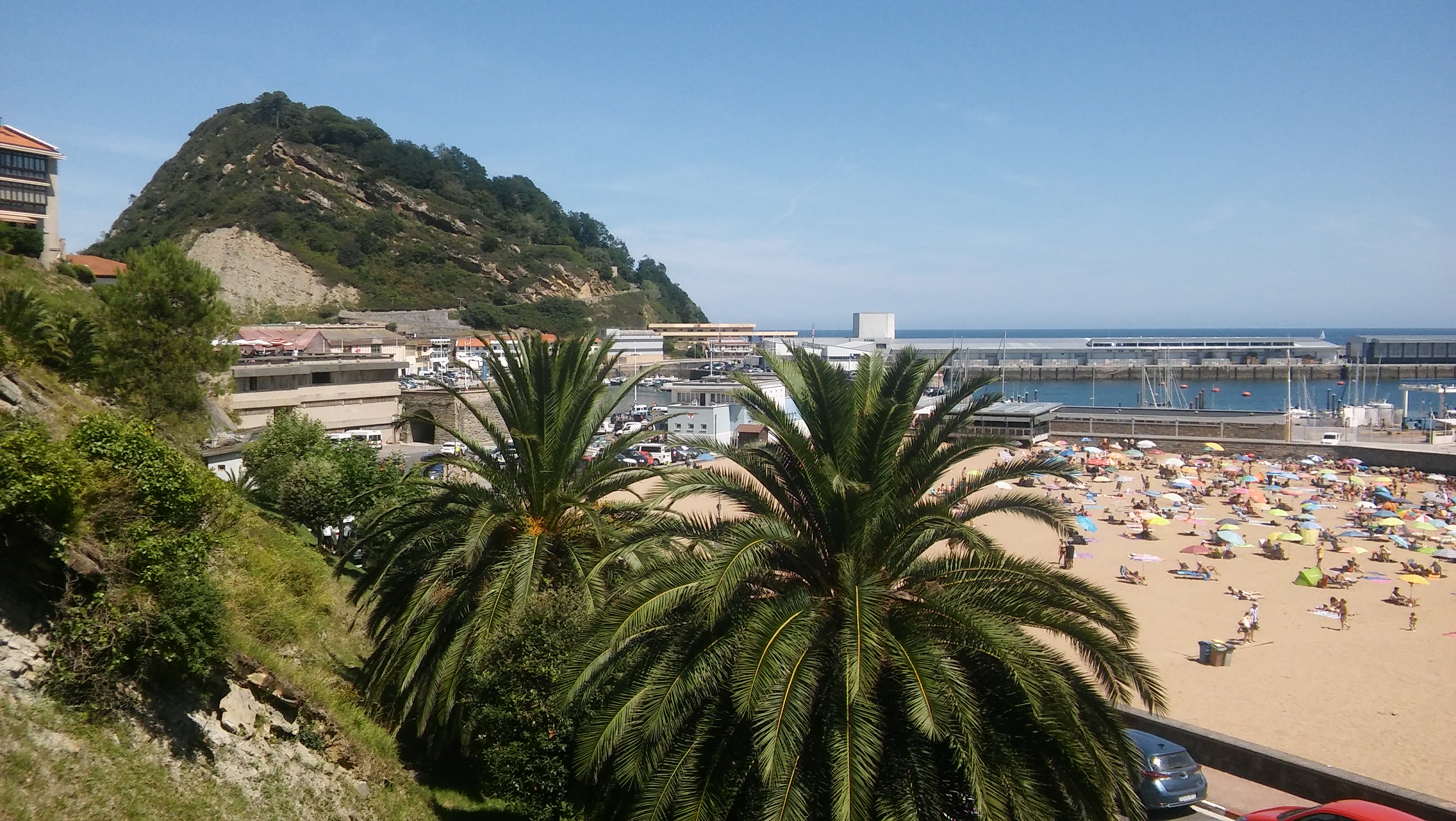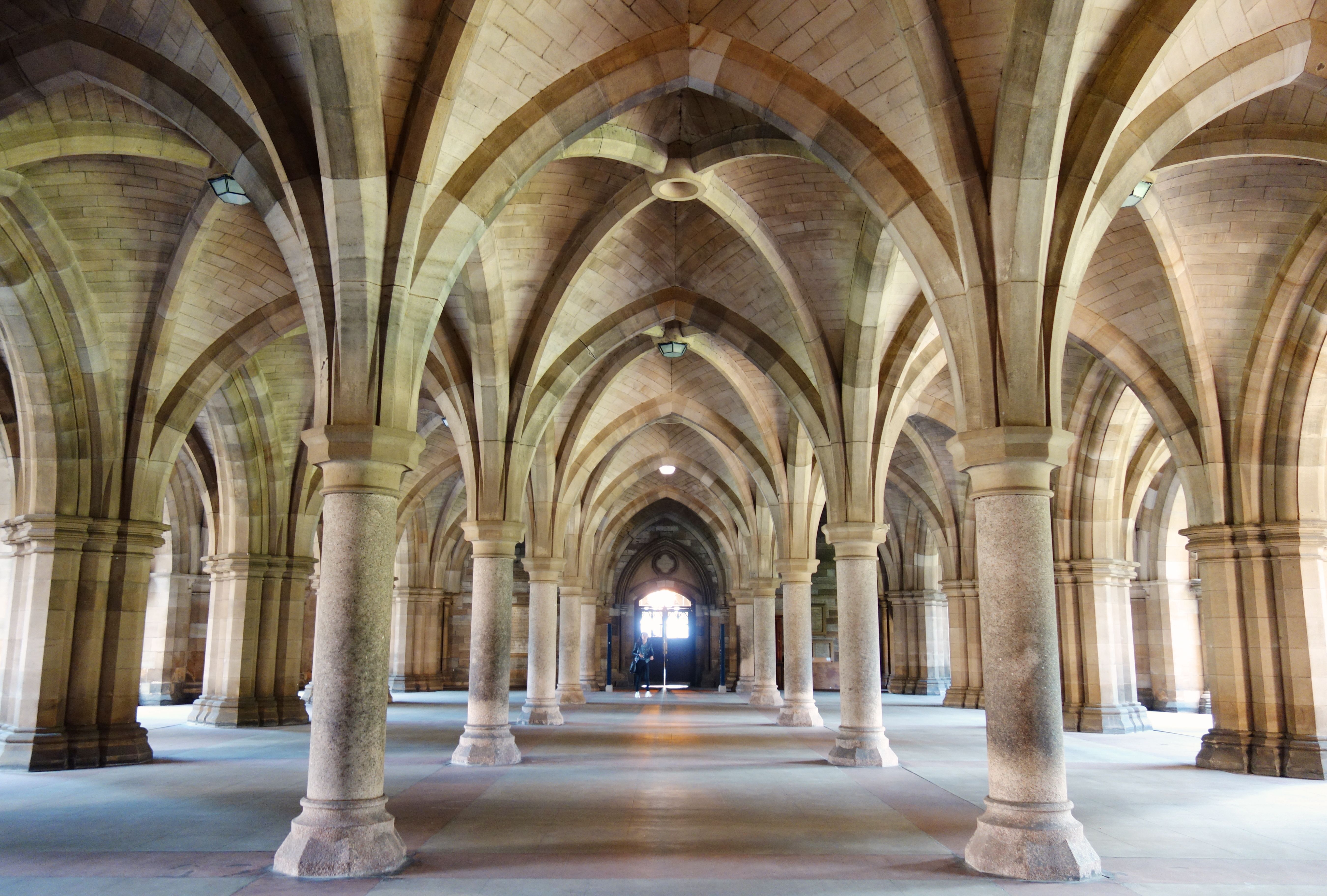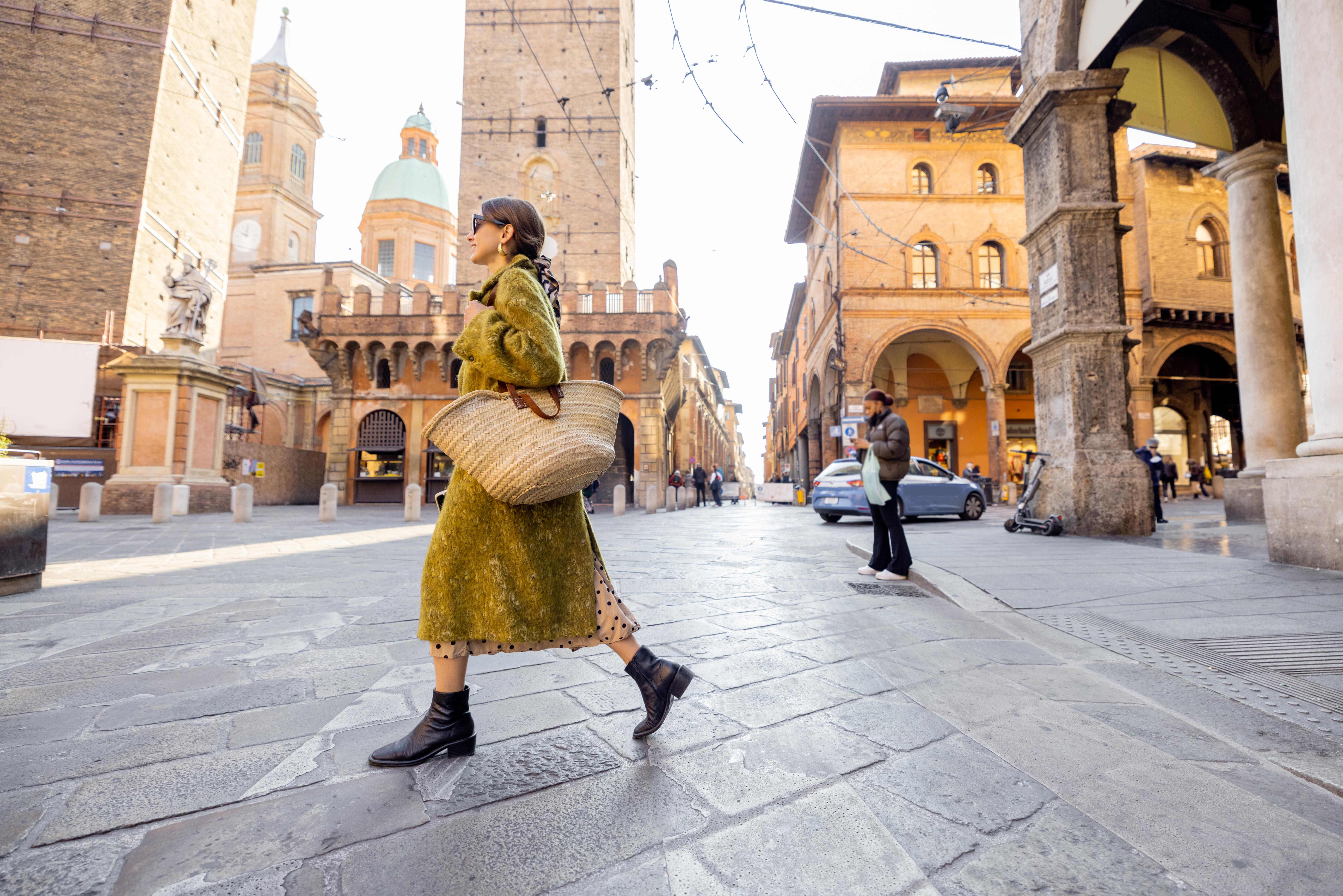25 Abandoned Castles and Fortresses That Look Straight Out of a Fairy Tale
Across windswept highlands, deep within enchanted forests, and atop craggy cliffs that kiss the clouds, the world’s abandoned castles stand like haunting time capsules—silent, majestic, and steeped in forgotten glory. These once-mighty fortresses and royal estates have been surrendered to nature, their ramparts crumbling, their halls hollowed, yet their stories still echo through stone and shadow. While some were decimated by war or reclaimed by the forest, others simply faded from memory, leaving behind ivy-covered ruins that captivate the soul and stir the imagination. Now expanded to 25 incredible entries, this journey takes you deeper into the world’s most hauntingly beautiful abandoned castles—each one with a past as dramatic as its architecture. From moated marvels shrouded in mist to cliffside citadels lost in time, these forgotten masterpieces whisper of power, betrayal, love, and loss. Some are cloaked in legend, others wrapped in eerie stillness, but all are bound by their ability to transport us to a time when kings ruled, battles raged, and magic felt just within reach.
1. Neuschwanstein Castle: A Romantic Vision in Ruins
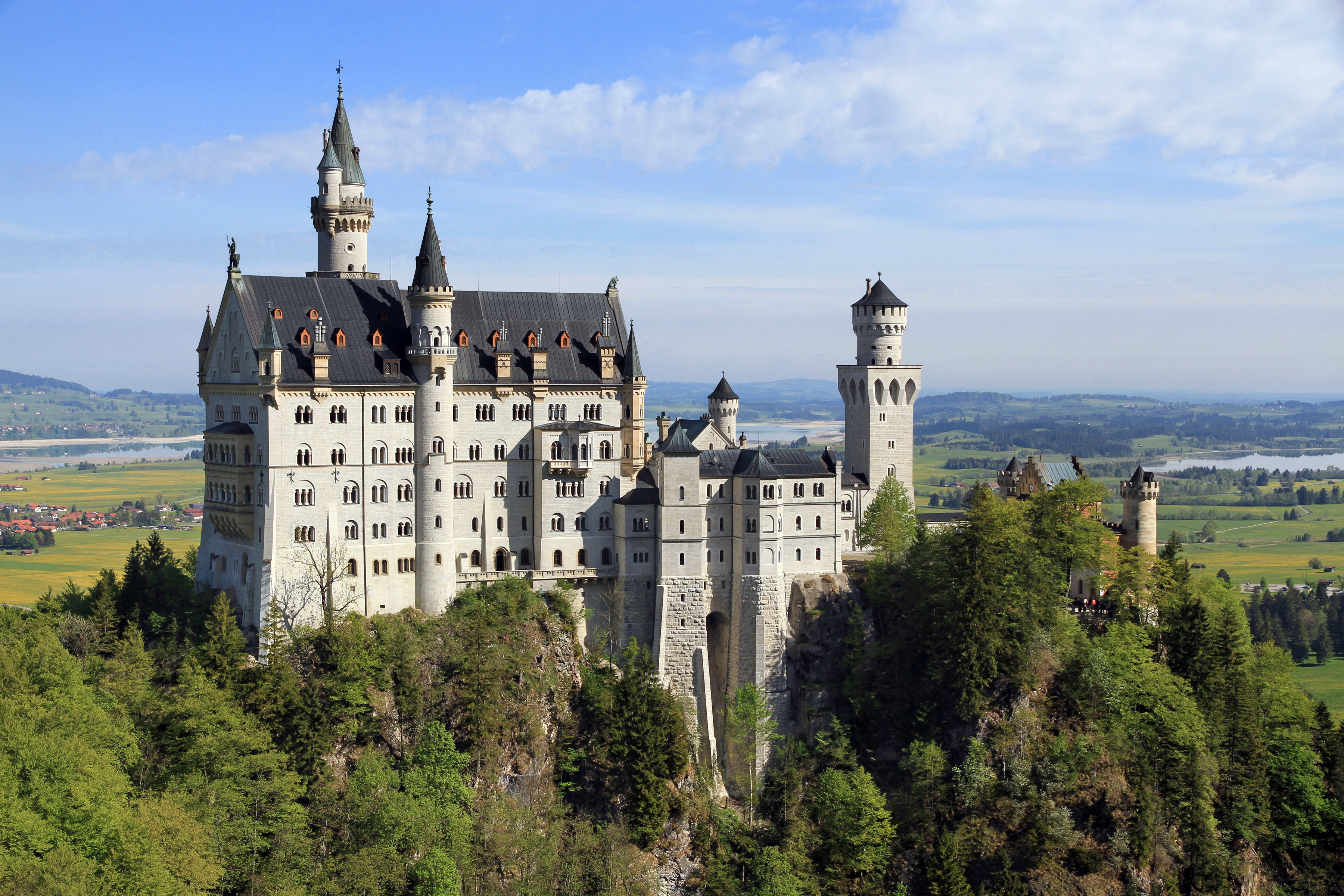
Rising dramatically from the Bavarian Alps, Neuschwanstein Castle embodies the extravagant fantasies of King Ludwig II of Bavaria. While it has become one of the most recognizable castles in the world, its story is tinged with mystery and unfulfilled ambition. Designed as a romantic retreat inspired by medieval legends and operatic grandeur, its soaring turrets, intricate frescoes, and breathtaking mountain backdrop create a scene straight out of a fairy tale. Though millions visit each year, few realize that much of its interior remains unfinished, a haunting reminder of Ludwig’s sudden and enigmatic downfall. His untimely death left the castle in limbo, preserving it as both a monument to artistic vision and a testament to dreams left incomplete.
2. Château de la Mothe-Chandeniers: Nature's Embrace
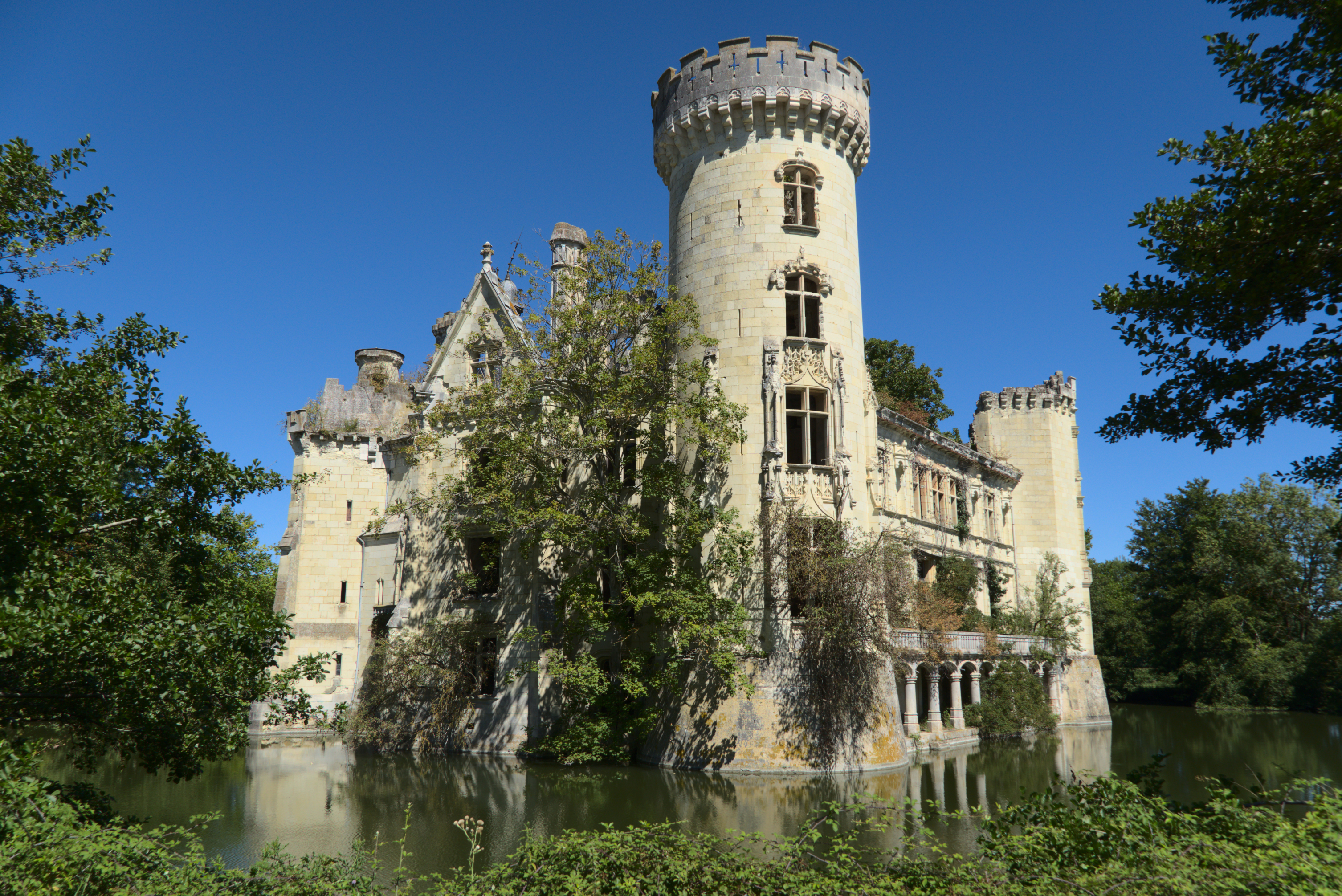
Deep in the French countryside, Château de la Mothe-Chandeniers rises like a forgotten relic, its ivy-clad towers and crumbling turrets giving it an almost mythical presence. Once a grand aristocratic estate, a devastating fire in the 1930s left it abandoned, allowing nature to reclaim the ruins. Now, trees grow within its once-opulent halls, their roots intertwining with stone, creating an ethereal blend of architecture and wilderness. In a rare twist of fate, thousands of people across the globe have joined forces to save it, crowdfunding its restoration and ensuring its story continues. The château is no longer just a ruin—it is a symbol of collective passion and the enduring allure of history.
3. Ballycarbery Castle: Echoes of Ireland's Past
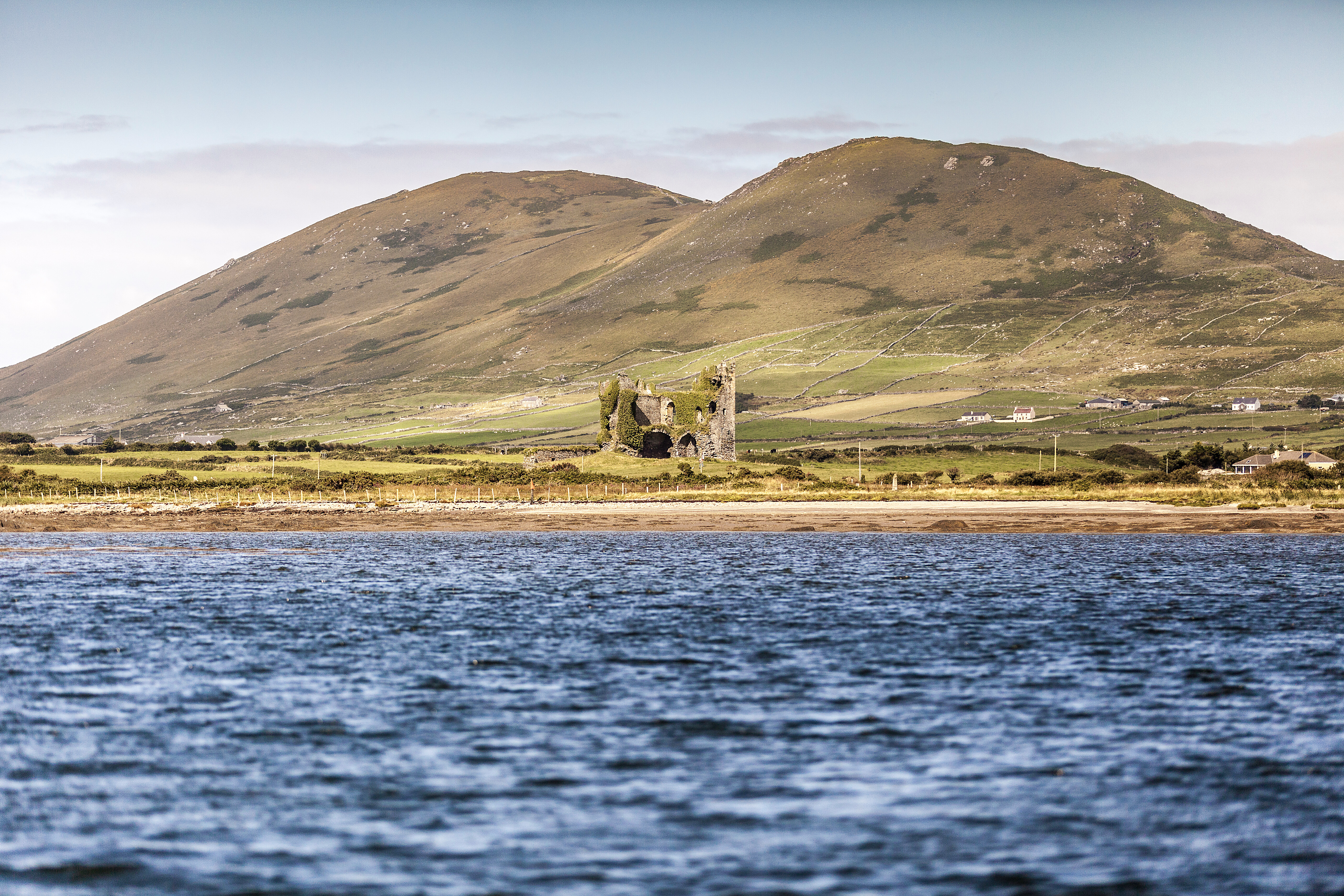
Set against the rugged landscapes of County Kerry, Ballycarbery Castle is a haunting vestige of Ireland’s turbulent past. Built in the 16th century by the McCarthy clan, it once stood as a formidable fortress, commanding the coastline with its imposing stone walls. Time and conflict have taken their toll, leaving the structure in dramatic ruin, its ivy-draped battlements blending into the wild Irish landscape. The castle’s silhouette against the rolling green hills is an evocative sight, stirring visions of ancient clans and bygone battles. Though weathered by centuries, Ballycarbery remains an enduring symbol of resilience, defiance, and the untamed beauty of Ireland.
4. Hohenzollern Castle: A Fortress of Dreams
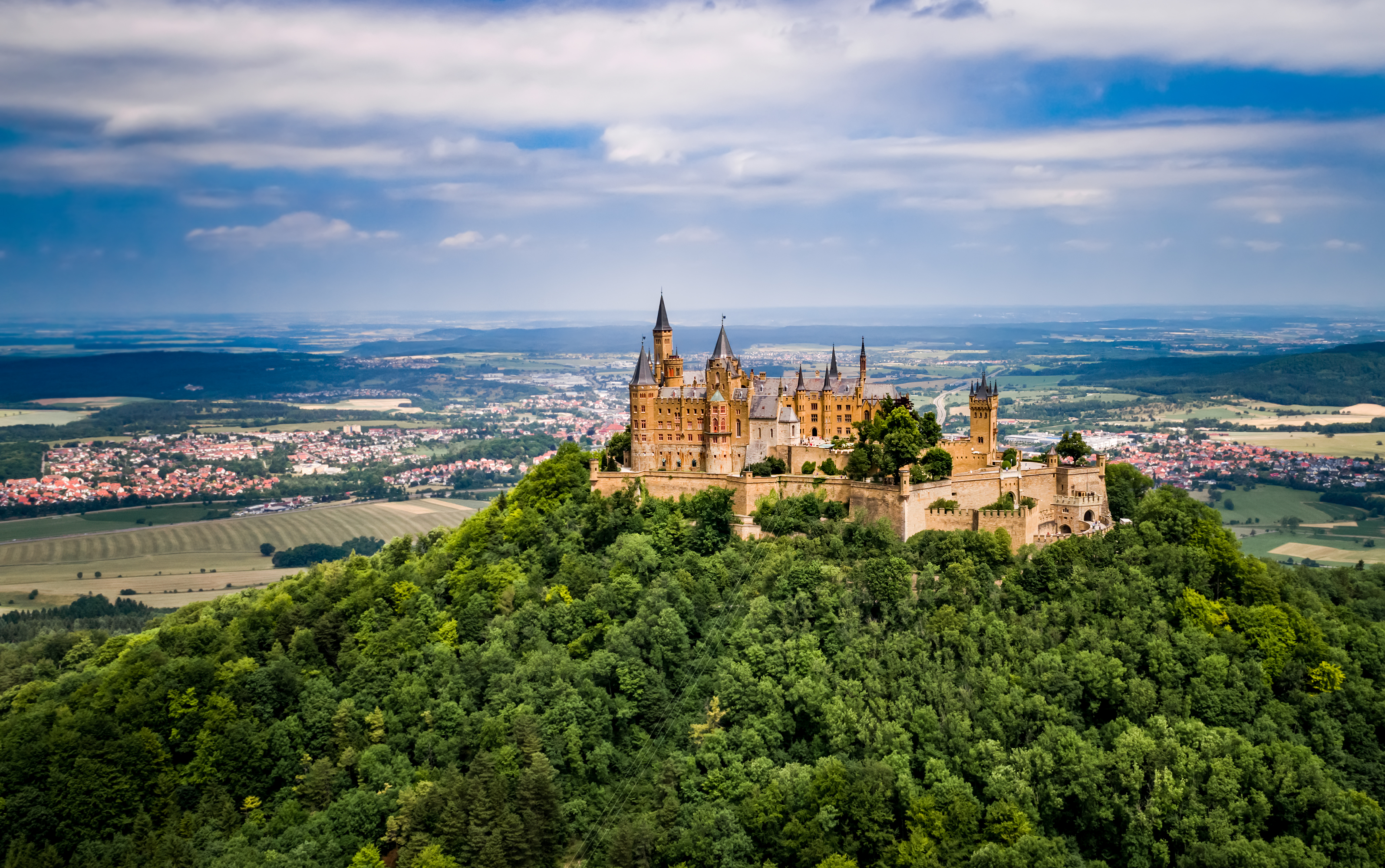
Perched atop a commanding peak in the Swabian Alps, Hohenzollern Castle is a striking vision of neo-Gothic splendor. Built in the 19th century, it was a grand reimagining of medieval fortresses, a tribute to the powerful Hohenzollern dynasty that shaped German history. Its elegant turrets, elaborate stonework, and panoramic views create a storybook spectacle, yet beneath its grandeur lies a fascinating past of political ambition and shifting fortunes. Unlike many castles lost to time, Hohenzollern remains well-preserved, offering a window into a regal era of opulence and power. Walking its halls today, visitors step into a world where history, architecture, and legend converge.
5. Eilean Donan Castle: Scotland's Iconic Ruin
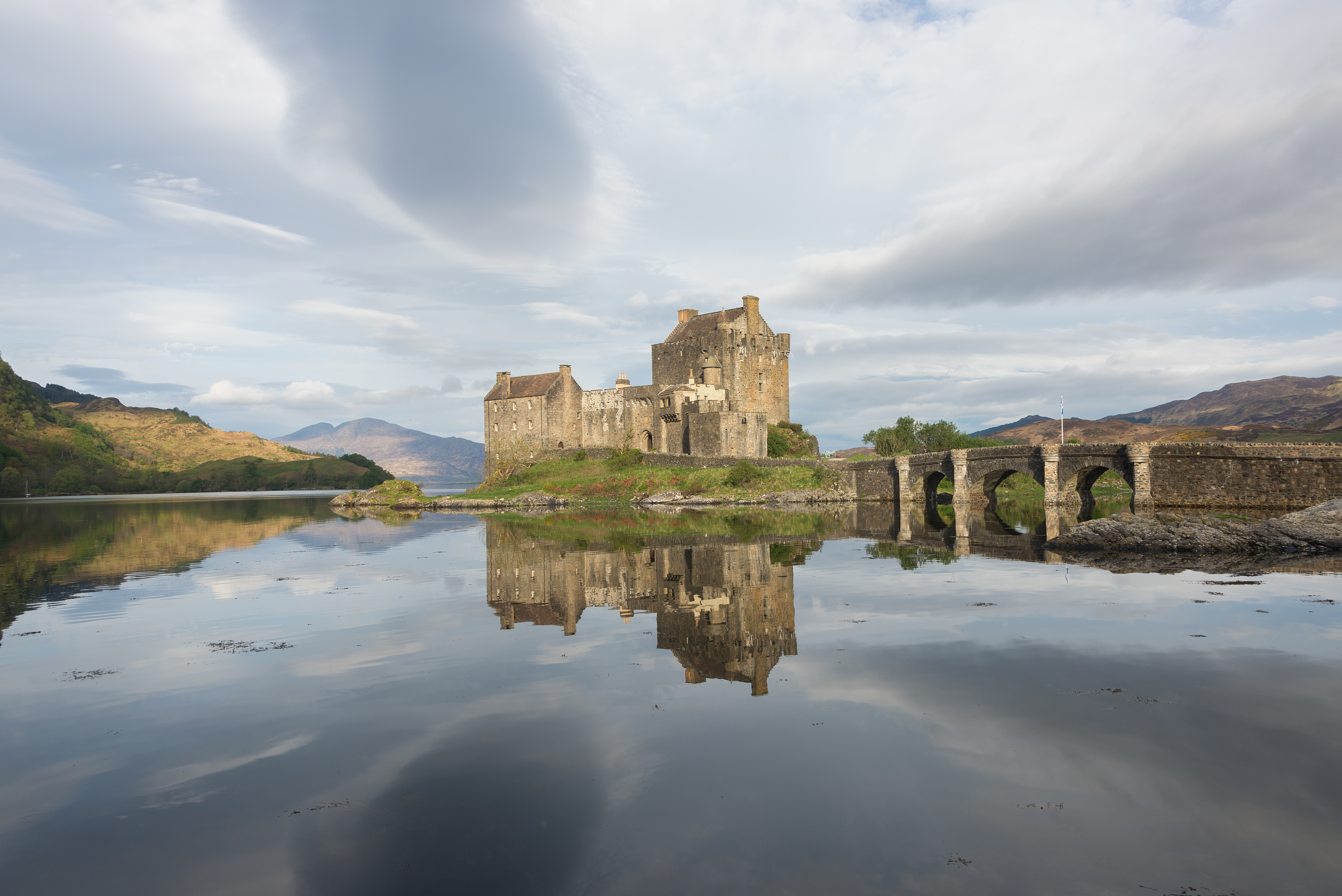
Few castles capture the essence of Scotland quite like Eilean Donan. Set on a small island where three sea lochs meet, this fortress is a symbol of Scottish pride and perseverance. Built in the 13th century, it played a crucial role in defending against Viking invasions and later became a stronghold for the Mackenzie clan. Destroyed in the 18th century, it lay in ruin for almost 200 years before being meticulously rebuilt. Today, its rugged stone walls and scenic location make it one of the most photographed castles in the world. More than just a landmark, Eilean Donan embodies the spirit of Scottish resilience—a connection to the past that continues to captivate visitors.
6. Burg Eltz: A Medieval Dream
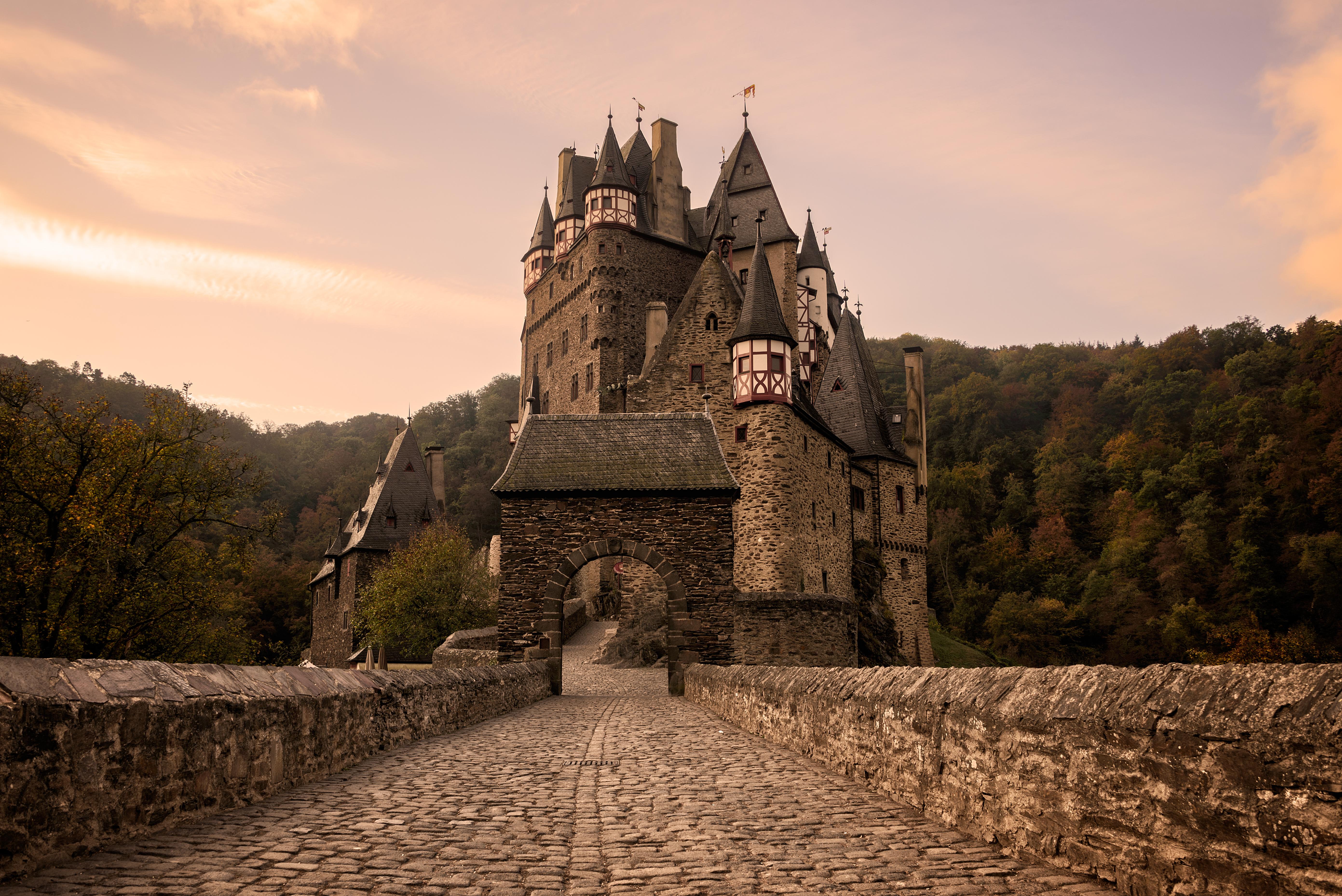
Hidden within the wooded hills of the Moselle Valley, Burg Eltz is a rare medieval stronghold that has remained untouched by war. Built in the 12th century, it has been inhabited by the same family for over 850 years, preserving its authenticity and old-world charm. Unlike many castles that have succumbed to ruin, Burg Eltz feels like stepping into a time capsule—a place where knights once walked, feasts were held, and legends were born. Its fairy-tale towers and half-timbered facades create an otherworldly atmosphere, drawing travelers eager to experience the magic of a medieval world that still lingers.
7. Predjama Castle: A Fortress in the Cave
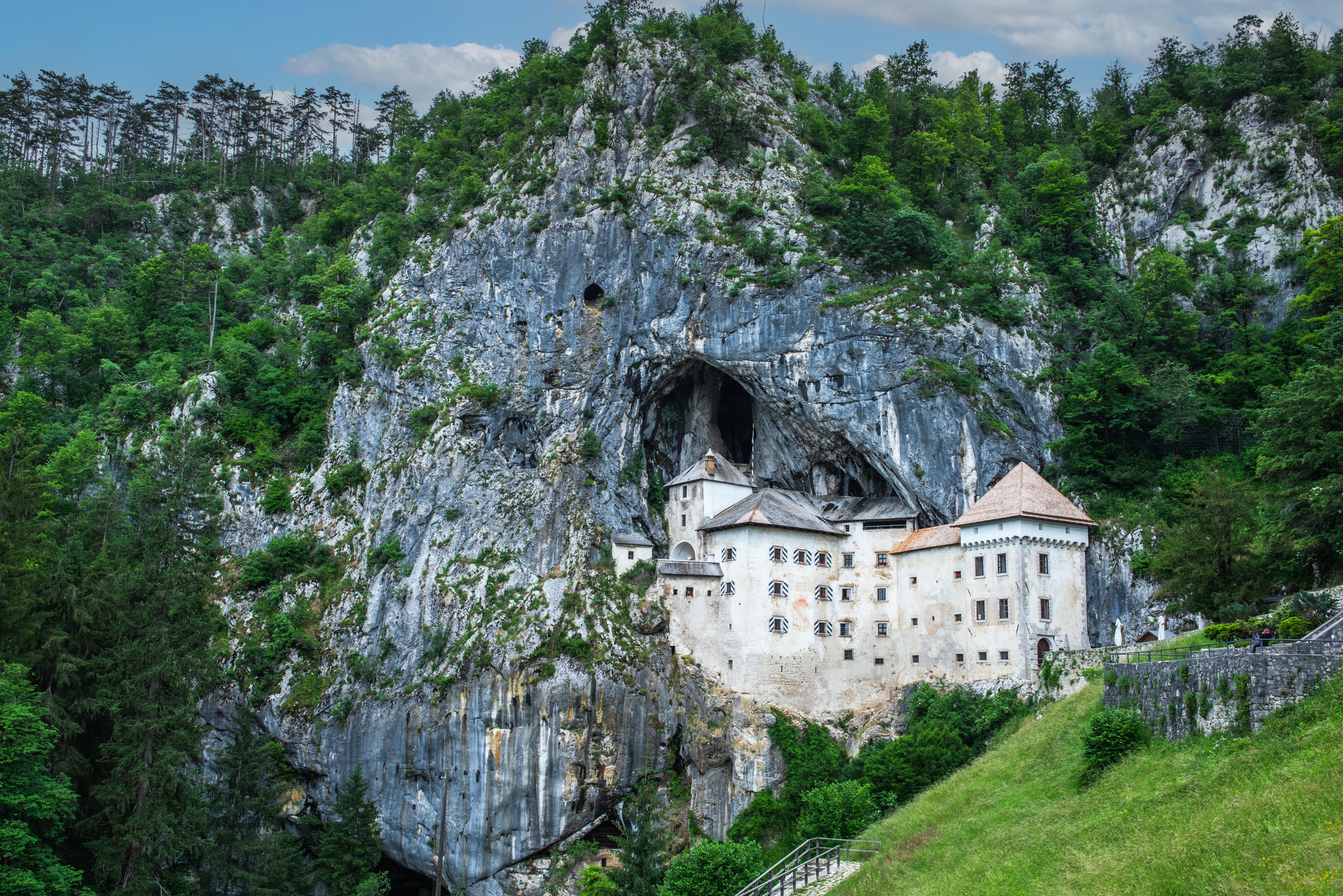
Carved into the mouth of a massive cave in Slovenia, Predjama Castle is an architectural wonder like no other. Built in the 13th century, it seamlessly blends into the natural rock face, using the cavern’s depth for both protection and escape routes. This formidable structure became famous as the lair of Erazem Lueger, a rebellious knight who outwitted his besiegers by using hidden tunnels to smuggle supplies. To this day, the castle retains its mystique and intrigue, with ghostly legends adding to its allure. Exploring Predjama is like stepping into a medieval legend, where every shadow seems to whisper stories of rebellion, secrecy, and survival.
8. Château de Pierrefonds: A Gothic Revival Masterpiece
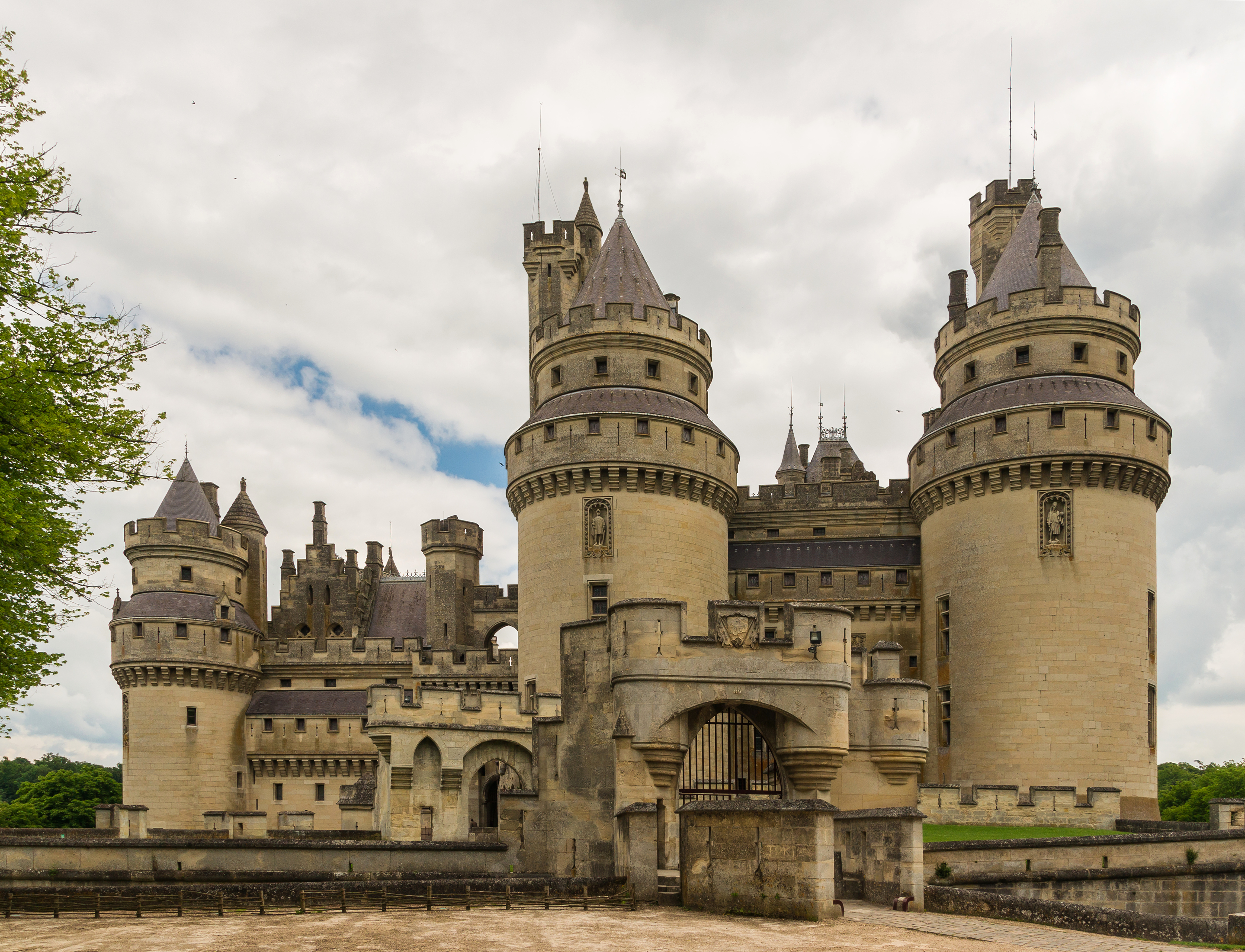
Hidden within the woodlands of northern France, Château de Pierrefonds is a stunning blend of medieval grandeur and 19th-century imagination. Originally built in the 14th century, this fortress fell into ruin before being revived by the famed architect Eugène Viollet-le-Duc, who transformed it into a dreamlike vision of the Middle Ages. With its towering turrets, elaborate stonework, and a grand drawbridge, the château feels like something pulled from the pages of an Arthurian legend. Today, it is a beloved film location and a popular stop for history enthusiasts, offering visitors the chance to wander through its grand halls and uncover a romanticized take on medieval architecture. Whether admired for its historical roots or its cinematic appeal, Château de Pierrefonds remains a striking testament to France’s architectural artistry.
9. Spiš Castle: Slovakia’s Majestic Ruin
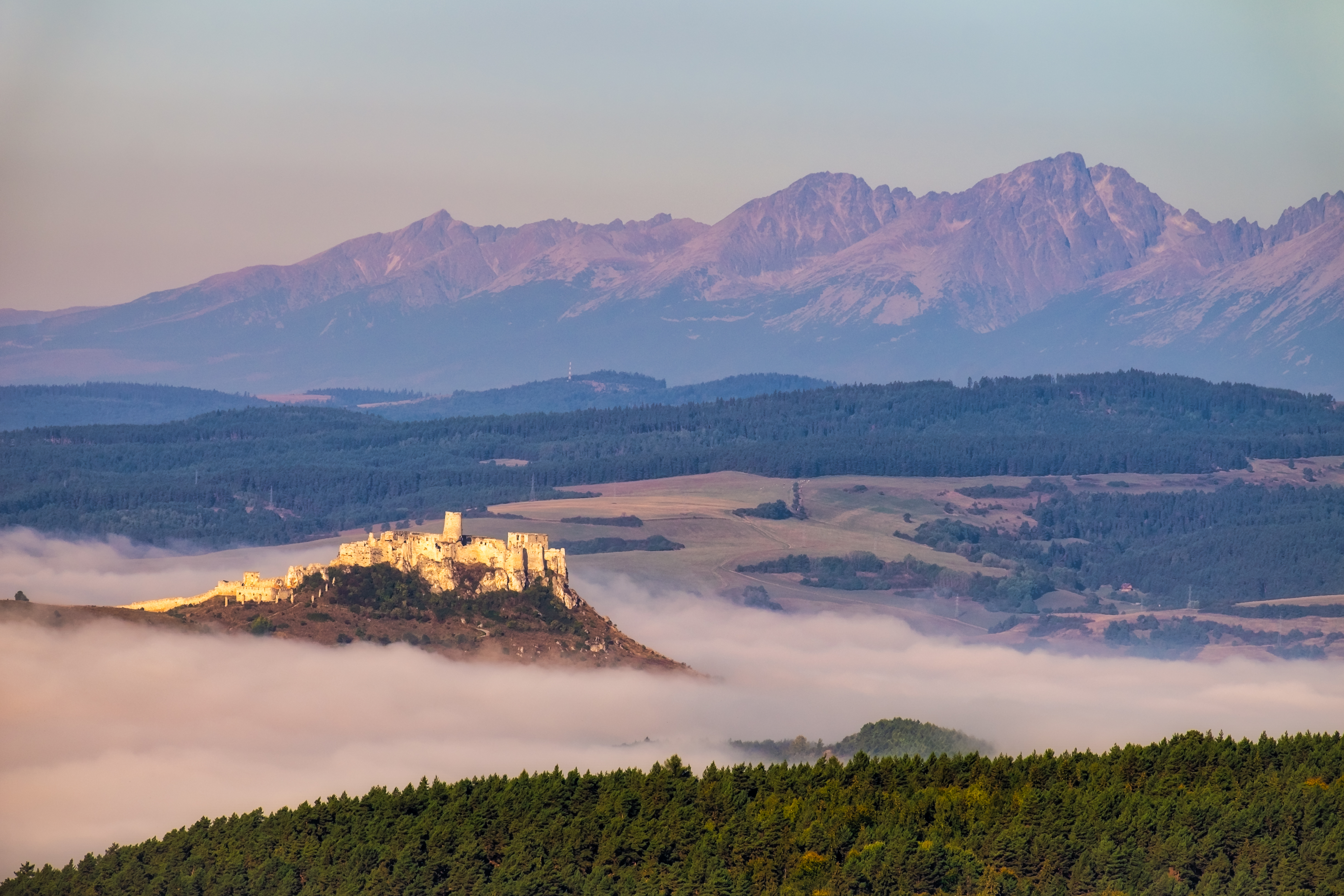
Perched on a hilltop in Slovakia, Spiš Castle is one of the largest medieval fortresses in Central Europe, its ruins stretching across a breathtaking four hectares. Constructed in the 12th century, this once-mighty stronghold bore witness to centuries of power struggles, royal coronations, and devastating sieges. Though time and conflict have reduced much of it to majestic ruins, its imposing stone towers and fortified walls still stand as a monument to medieval resilience. From the battlements, visitors can gaze out over rolling green landscapes, picturing the days when knights and noble families called this castle home. With its UNESCO World Heritage status, Spiš Castle remains a proud emblem of Slovakia’s medieval past, drawing travelers eager to step back in time.
10. Château de Montségur: A Cathar Stronghold
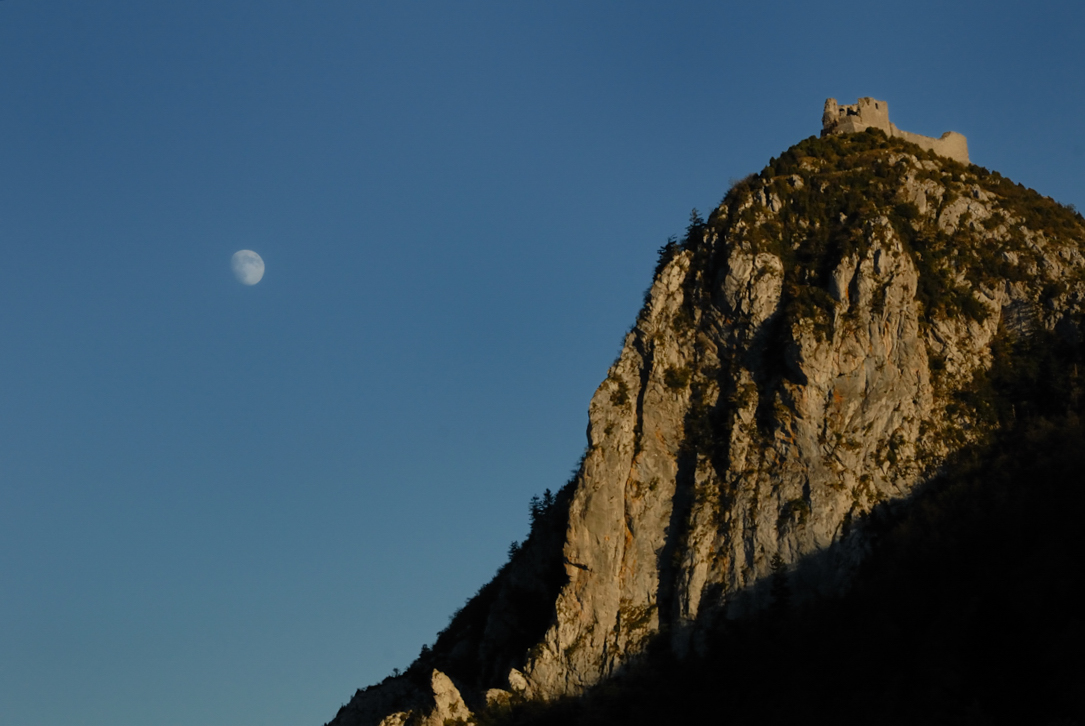
Rising defiantly from a rocky peak in the Pyrenees, Château de Montségur is more than just a ruin—it is a symbol of defiance and tragedy. This 13th-century fortress served as the final refuge of the Cathars, a religious sect persecuted by the Catholic Church. In 1244, after a relentless ten-month siege, the castle fell, leading to a mass execution of over 200 Cathars who chose death over conversion. Today, its windswept ruins and sheer cliffside views offer a sobering yet awe-inspiring experience, inviting visitors to reflect on the fortress’s haunting past. Whether drawn by its dramatic scenery, compelling history, or spiritual significance, Montségur continues to stand as one of France’s most poignant medieval relics.
11. Kilchurn Castle: A Highland Gem
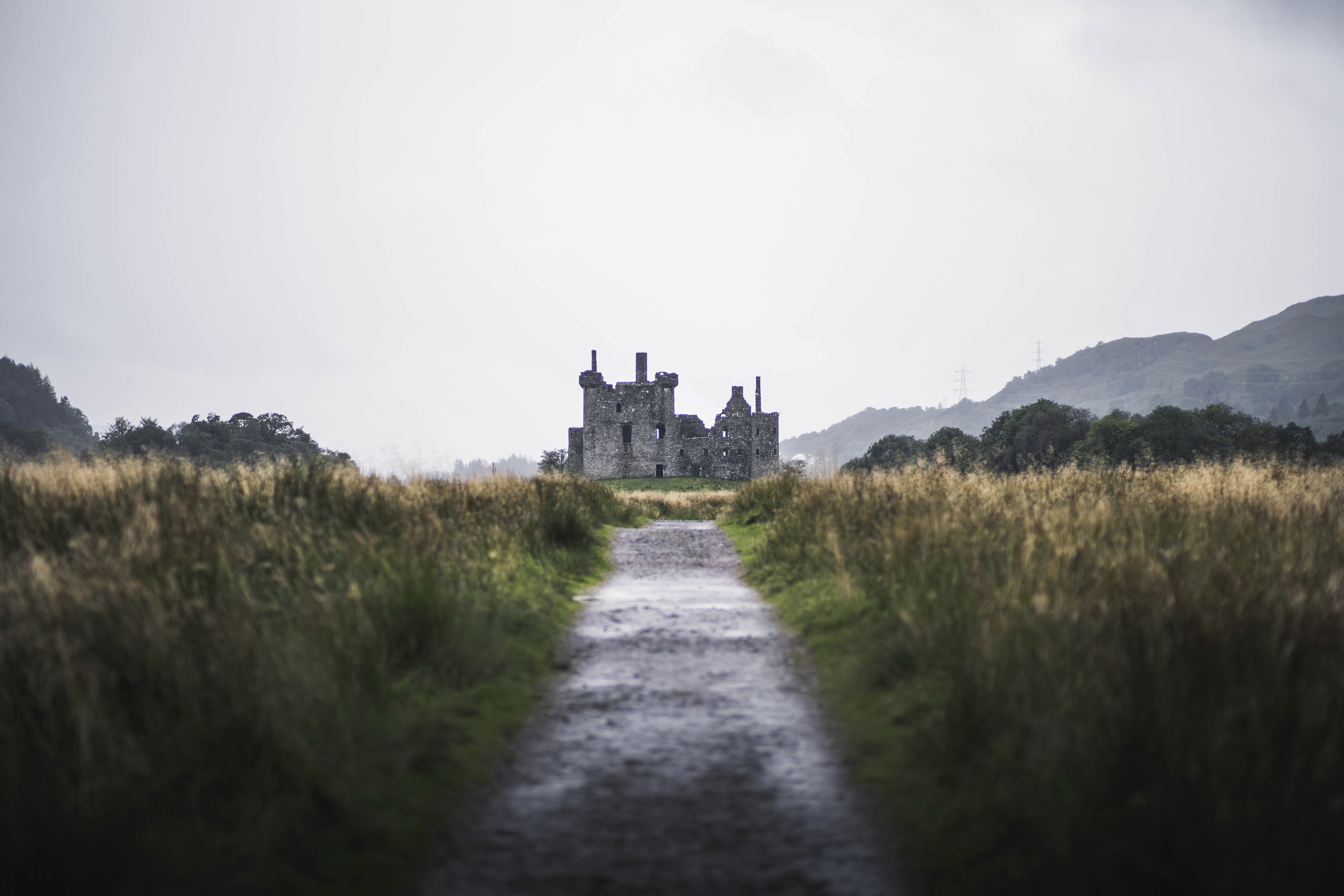
Set against the brooding backdrop of Loch Awe, Kilchurn Castle is the very essence of Scottish Highland romance. Built in the mid-15th century by the Campbell clan, this once imposing fortress and noble residence later served as a garrison during Scotland’s Jacobite uprisings. Today, its weathered stone walls and crumbling towers provide a picturesque contrast to the surrounding wild beauty of the Highlands. A visit to Kilchurn feels like stepping into a painting, where the mist often rolls in over the lake, wrapping the ruins in an atmosphere of timeless mystery. Though partially in ruin, Kilchurn Castle still commands attention, standing as a silent witness to Scotland’s turbulent history and breathtaking landscapes.
12. Castel del Monte: An Architectural Enigma
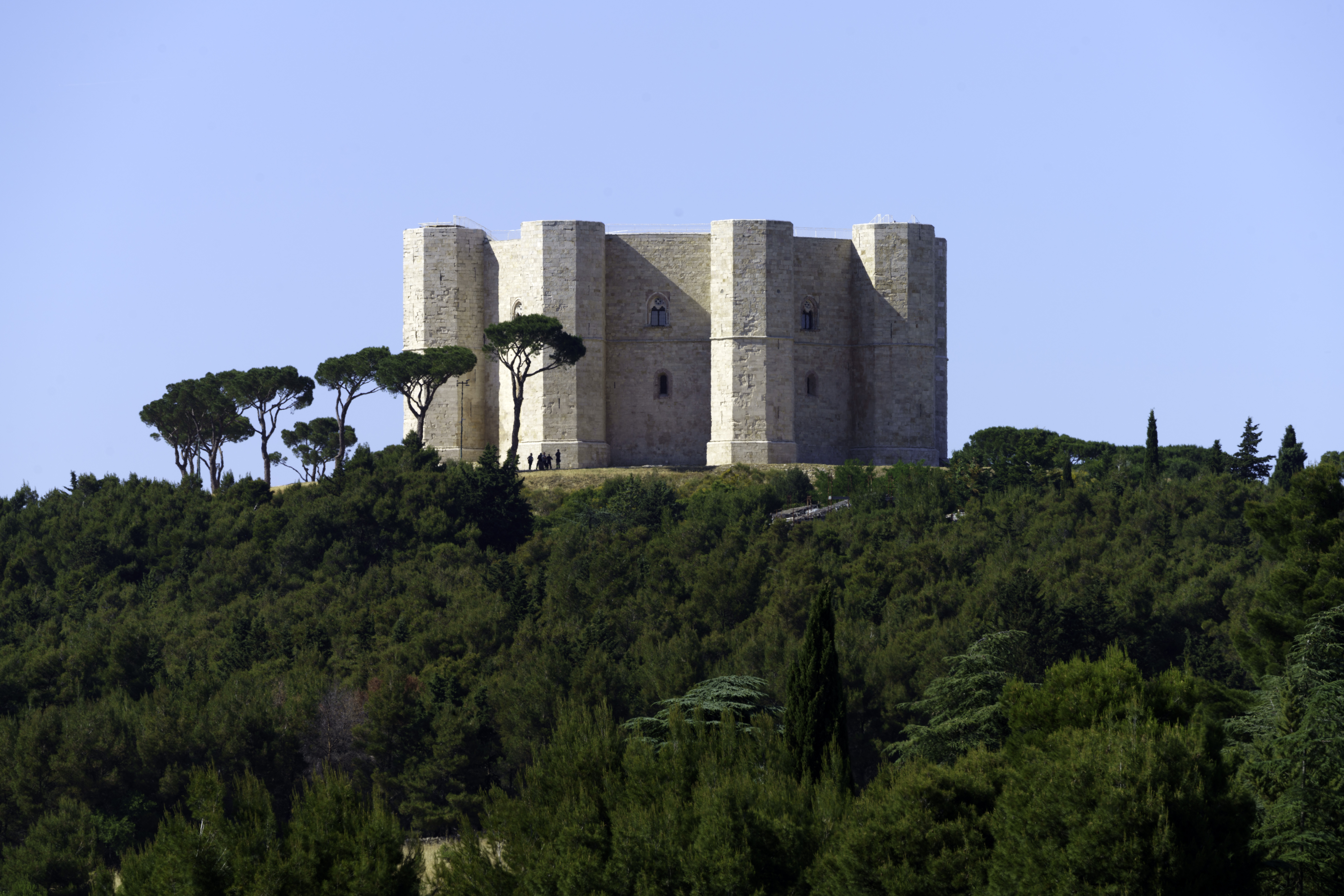
Unlike any other fortress in Europe, Castel del Monte is a masterpiece of mathematical and symbolic precision. Built in the 13th century by Emperor Frederick II in the Apulia region of Italy, its perfect octagonal shape and eight equally spaced towers have puzzled historians for centuries. Was it a hunting lodge, a military stronghold, or an astronomical observatory? No one knows for sure. Unlike typical medieval castles, it lacks a moat, defensive walls, or clear military purpose, adding to its mystique. The golden limestone façade and geometric symmetry make Castel del Monte an architectural marvel that continues to intrigue scholars and captivate visitors. Whether exploring its precisely constructed interiors or admiring its strategic hilltop views, travelers are left with a lingering question—what was Emperor Frederick’s true vision for this enigmatic masterpiece?
13. Miranda Castle: Belgium’s Gothic Wonder
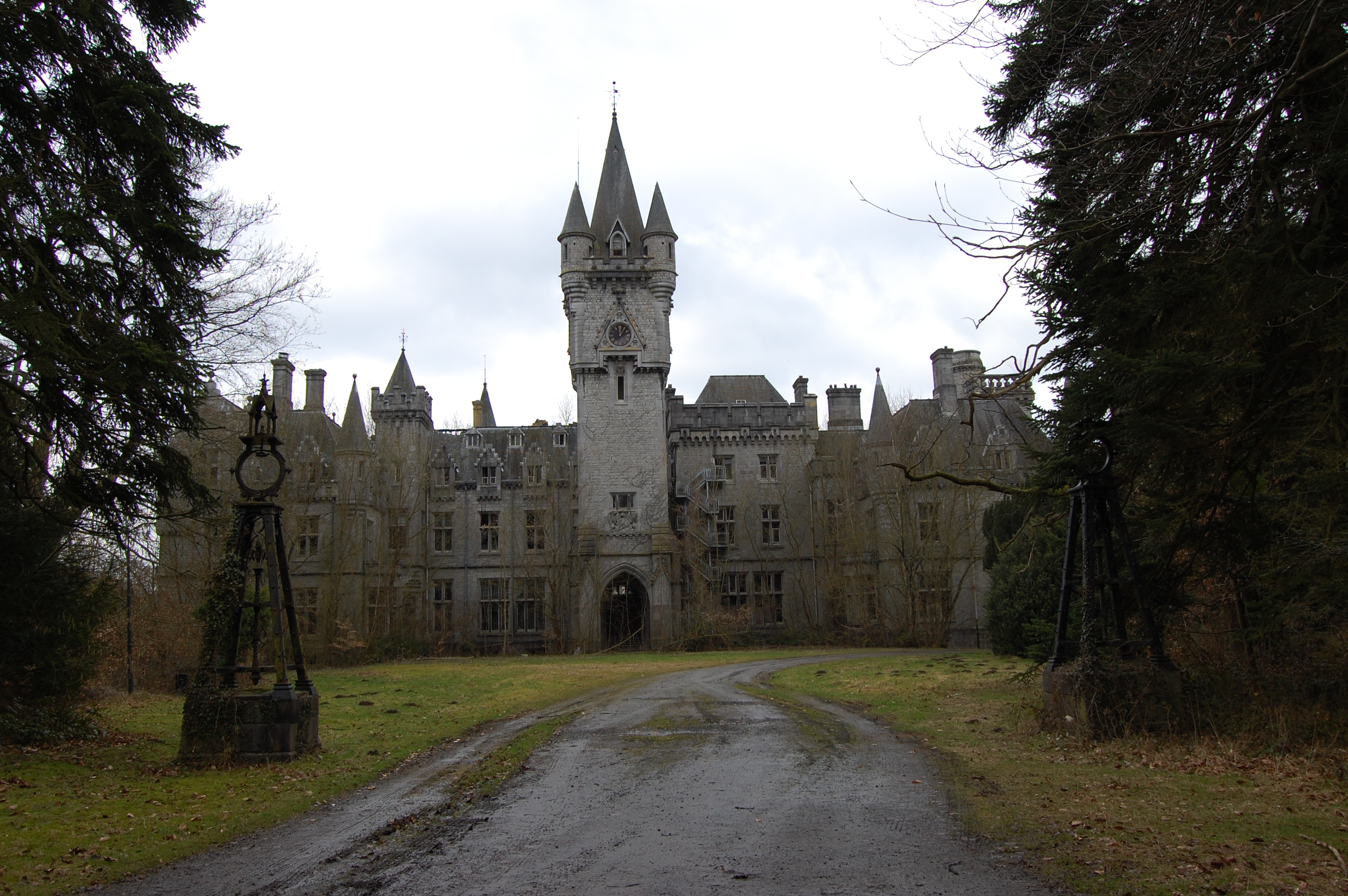
Hidden deep within the Belgian Ardennes, Miranda Castle (also known as Château de Noisy) exudes an eerie yet captivating presence. Built in the 19th century as a lavish summer retreat for the Liedekerke-Beaufort family, the castle’s grandeur faded over time. It later served as an orphanage and a sanatorium, before being completely abandoned in the 1990s, leaving nature to reclaim its once-magnificent towers and Gothic spires. The castle’s decaying hallways, ivy-covered turrets, and haunting atmosphere have made it a favorite subject for urban explorers and ghost hunters alike. Though its future remains uncertain, Miranda Castle stands as a melancholic yet mesmerizing relic of forgotten nobility, where the echoes of history whisper through its crumbling walls.
14. Bodiam Castle: A Moated Marvel
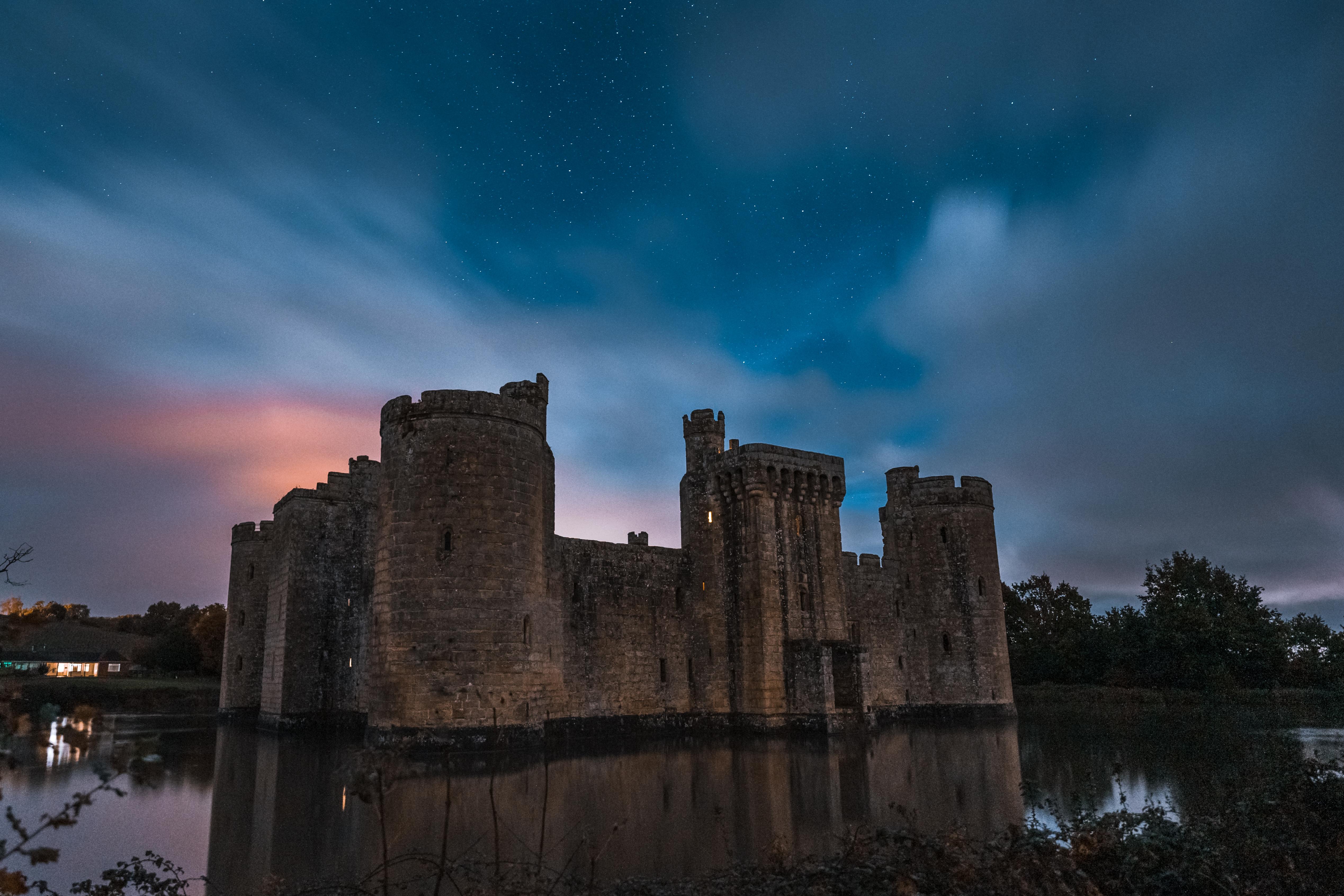
Nestled in the Sussex countryside, Bodiam Castle is a stunning example of medieval architecture. Though not abandoned, the castle's picturesque setting and fairy tale appearance lend it an air of mystery and enchantment. Built in the 14th century by Sir Edward Dalyngrigge, Bodiam Castle was designed as both a military stronghold and a comfortable residence. Its impressive moat, soaring towers, and intricate stonework make it a popular destination for tourists and history enthusiasts. As we explore Bodiam Castle, we delve into the fascinating history of its construction and the architectural marvels that define this moated wonder.
15. The Haunting Grandeur of Pidhirtsi Castle, Ukraine
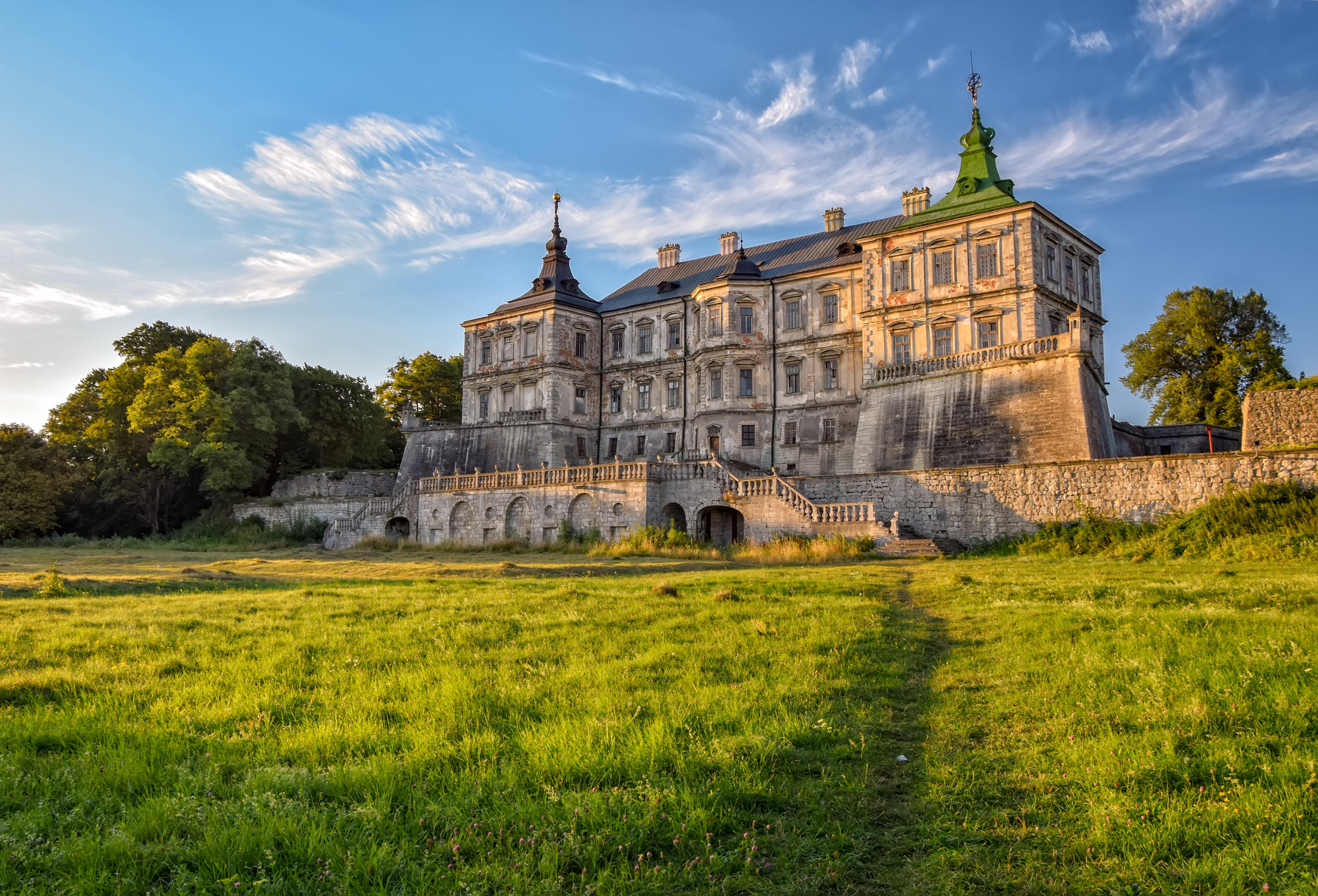
Rising from the misty landscapes of western Ukraine, Pidhirtsi Castle is an eerie yet breathtaking reminder of aristocratic opulence turned to ruin. Built in the 17th century as a lavish palace for Polish-Lithuanian nobility, the castle was adorned with ornate frescoes, grand ballrooms, and extensive gardens—earning it the reputation as one of Eastern Europe’s most elegant residences. However, war, neglect, and Soviet occupation have left the once-majestic fortress partially abandoned, its faded frescoes and weathered walls whispering stories of past grandeur. Despite its current state, Pidhirtsi Castle still exudes an ethereal beauty, standing atop a hill with panoramic views of the rolling Ukrainian countryside. Legends of hauntings only add to its allure, with stories of a “White Lady” ghost roaming the empty halls. Restoration efforts are slowly underway, but for now, Pidhirtsi remains a hauntingly beautiful relic of a bygone era.
16. Hohenbaden Old Castle, Germany – The Margravial Echo
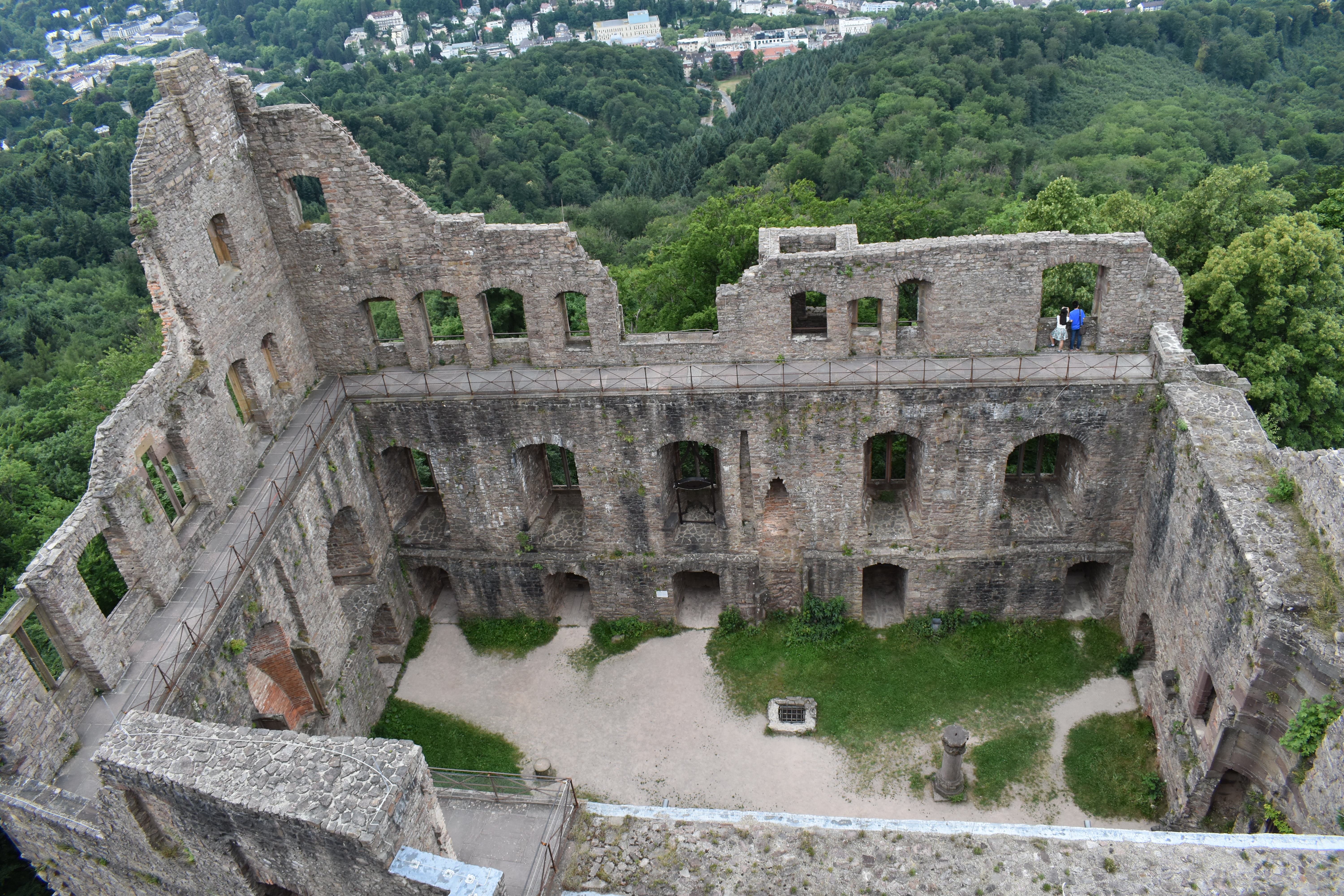
Perched high above the spa town of Baden-Baden, the Hohenbaden Old Castle—also known as Altes Schloss—looms like a forgotten sentinel of the Black Forest. Dating back to the 12th century, it once served as the prestigious residence of the Margraves of Baden. For centuries, it was a symbol of regional power and nobility, its thick stone walls echoing with the clang of armor and the hum of courtly intrigue. But after a devastating fire in the 16th century, it was left to crumble into romantic ruin. Today, ivy drapes over jagged ramparts, and fractured towers rise above the treetops, offering sweeping views of the Rhine Valley below. Visitors can wander through remnants of grand halls and an eerie music room carved directly into the cliff—its acoustics still haunting. Every creaking stair and empty corridor feels suspended in time, inviting you to listen closely to the whispers of nobles who once ruled from these heights.
17. Rakotz Castle, Germany – A Bridge to Myth
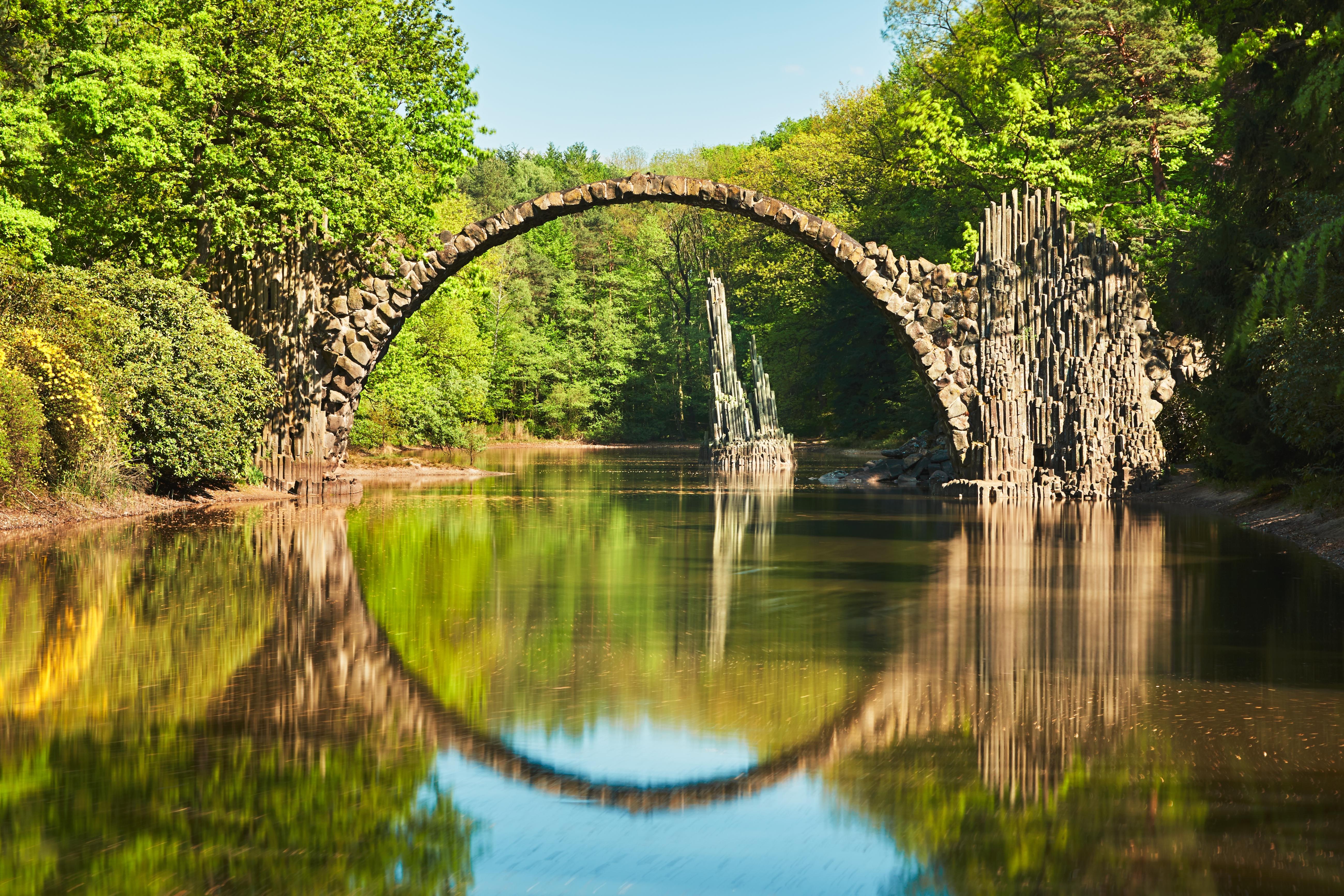
Tucked within the dense woods of Kromlau Park, Rakotz Castle is less a traditional stronghold and more a fever dream of Gothic fantasy. Its most famous feature—the Rakotzbrücke or “Devil’s Bridge”—was commissioned in the 19th century as a tribute to architectural perfection and artistic mystery. The bridge’s sharp, slender arch curves so precisely that it forms a flawless circle with its reflection in the water below. Though the castle itself has long faded into obscurity and the bridge is now closed to foot traffic, the entire site pulses with an almost supernatural energy. Shrouded by mist and framed by still, dark water, the setting feels lifted from a fairy tale—or a dark legend whispered around a fire. The surrounding park, overgrown and wild, adds to the dreamlike atmosphere. Whether visited in the golden light of autumn or under a winter fog, Rakotz Castle isn’t just a destination—it’s a portal into myth, imagination, and nature’s quiet power.
18. Tarasp Castle, Switzerland – Alpine Sentinel
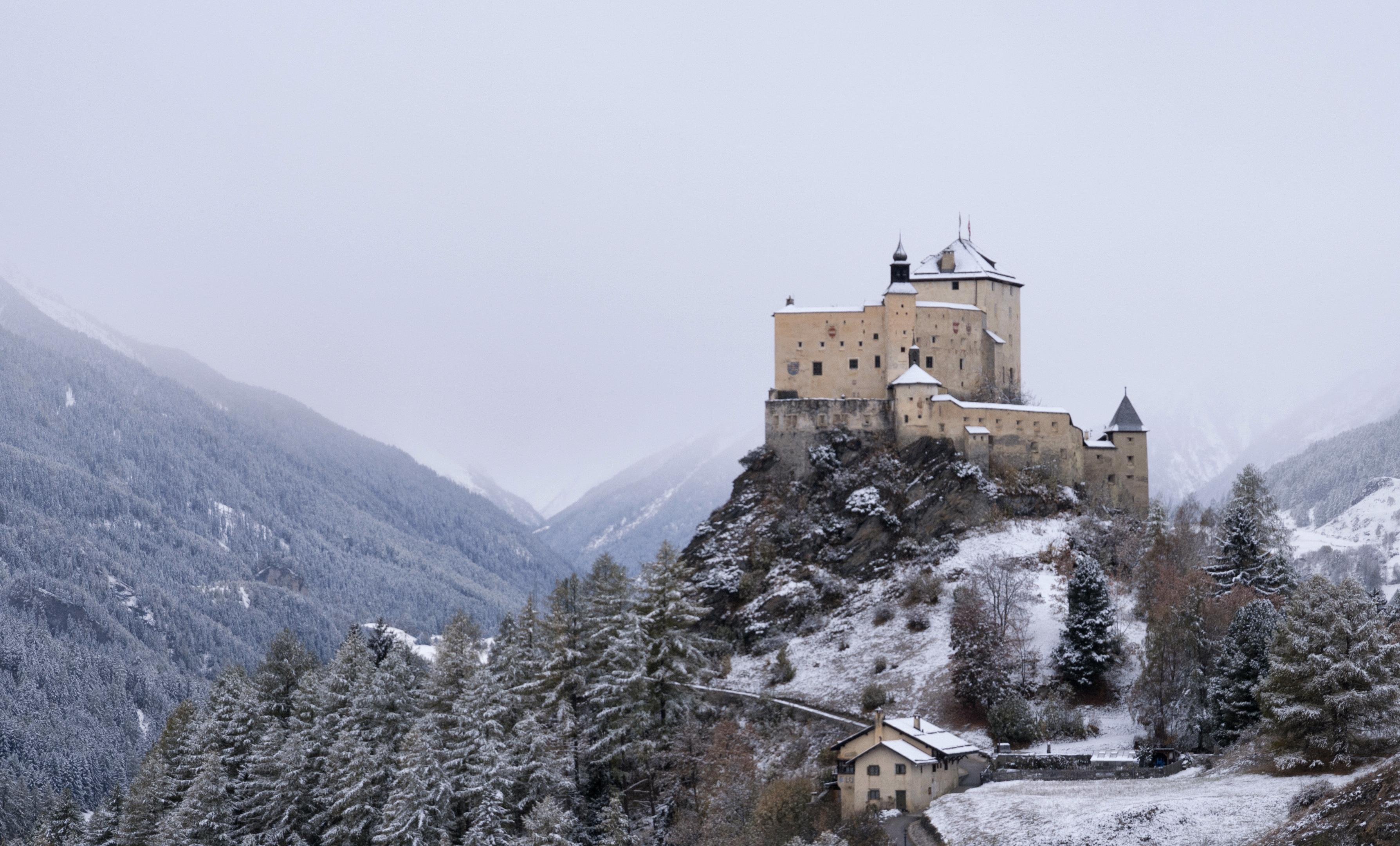
Crowning a rugged bluff in the Lower Engadine Valley, Tarasp Castle rises like a stone mirage above alpine meadows and icy blue lakes. Built in the 11th century by the Lords of Tarasp, the fortress passed through the hands of Austrians, Swiss reformers, and even artists like Karl August Lingner, the inventor of Odol mouthwash, who began restoring the structure in the early 20th century. Though now part museum and part private residence, large swaths of the castle remain untouched—echoes of battles, exiles, and noble ambitions still embedded in its thick walls and vaulted ceilings. The journey to Tarasp involves a steep hike or a winding drive, rewarding visitors with panoramic views that stretch across the Alps. The castle’s inner courtyard, ancient chapel, and armory tell stories of both grandeur and isolation. At dusk, when fog rolls in and bells toll from distant valleys, Tarasp feels less like a historical site and more like a memory the mountains never forgot.
19. Poenari Castle, Romania – Dracula’s Forgotten Fortress
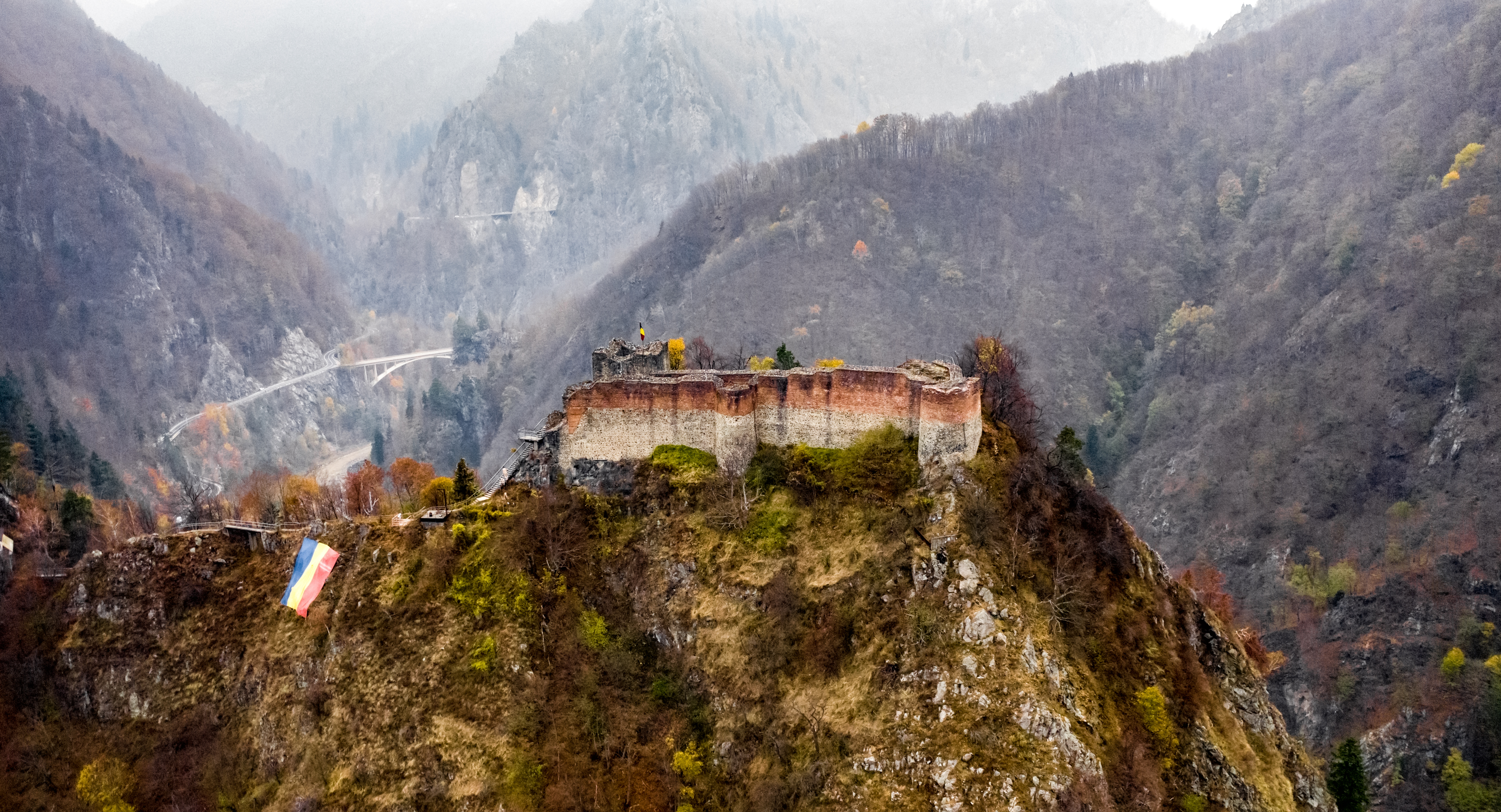
Often overshadowed by the more commercial Bran Castle, Poenari Fortress is the real domain of Vlad the Impaler—better known as the inspiration for Count Dracula. Perched precariously atop a cliff overlooking the Argeș River, the castle was strategically built in the 13th century and later reinforced by Vlad himself to serve as a stronghold during his ruthless reign. Abandoned for centuries and battered by both time and earthquake, only fragments of its walls and towers remain, but their impact is profound. Reaching Poenari requires scaling 1,480 steep stone steps through a thick Carpathian forest—a pilgrimage that feels like part quest, part endurance trial. Once at the top, visitors are rewarded with panoramic views and an eerie stillness that clings to the ruins like fog. The fortress's isolation and lack of tourist gloss make it one of the most authentically haunting historical sites in Eastern Europe. If Bran is the myth, Poenari is the raw, untamed reality—grim, majestic, and unforgettable.
20. Menlo Castle, Ireland – Ivy-Clad Romance
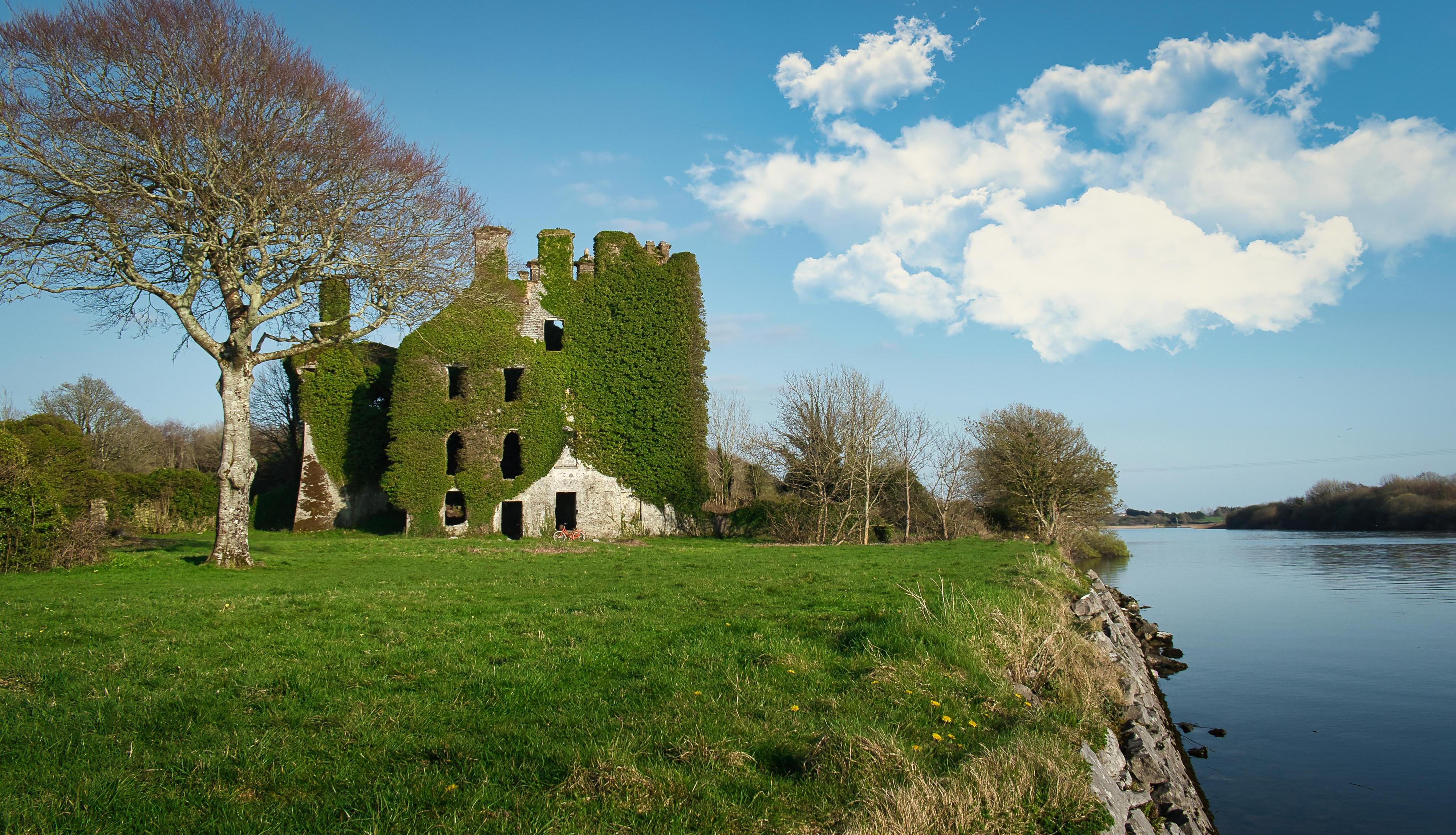
Hidden along the quiet banks of the River Corrib near Galway, Menlo Castle lies in ruins—its stone walls overgrown, its windows vacant yet alive with birdsong and rustling leaves. Built in the 16th century, this once-grand manor was home to the influential Blake family, a noble lineage deeply woven into Galway’s history. But in 1910, tragedy struck: a mysterious fire consumed the estate, and with it, the life of Eleanor Blake, whose ghost locals claim still lingers among the ruins. Left unrepaired, the castle slowly surrendered to nature. Today, thick ivy climbs every surface, trees grow through former drawing rooms, and shafts of light filter through broken ceilings, illuminating mossy stones like cathedral glass. Menlo Castle’s atmosphere is at once peaceful and profoundly melancholic, inviting those who visit to step into a world where history breathes softly beneath the greenery. Whether you're drawn by its romance, its rumored hauntings, or its photogenic serenity, Menlo enchants like a living poem written in stone and shadow.
21. Dunstanburgh Castle, England – A Fortress by the Sea
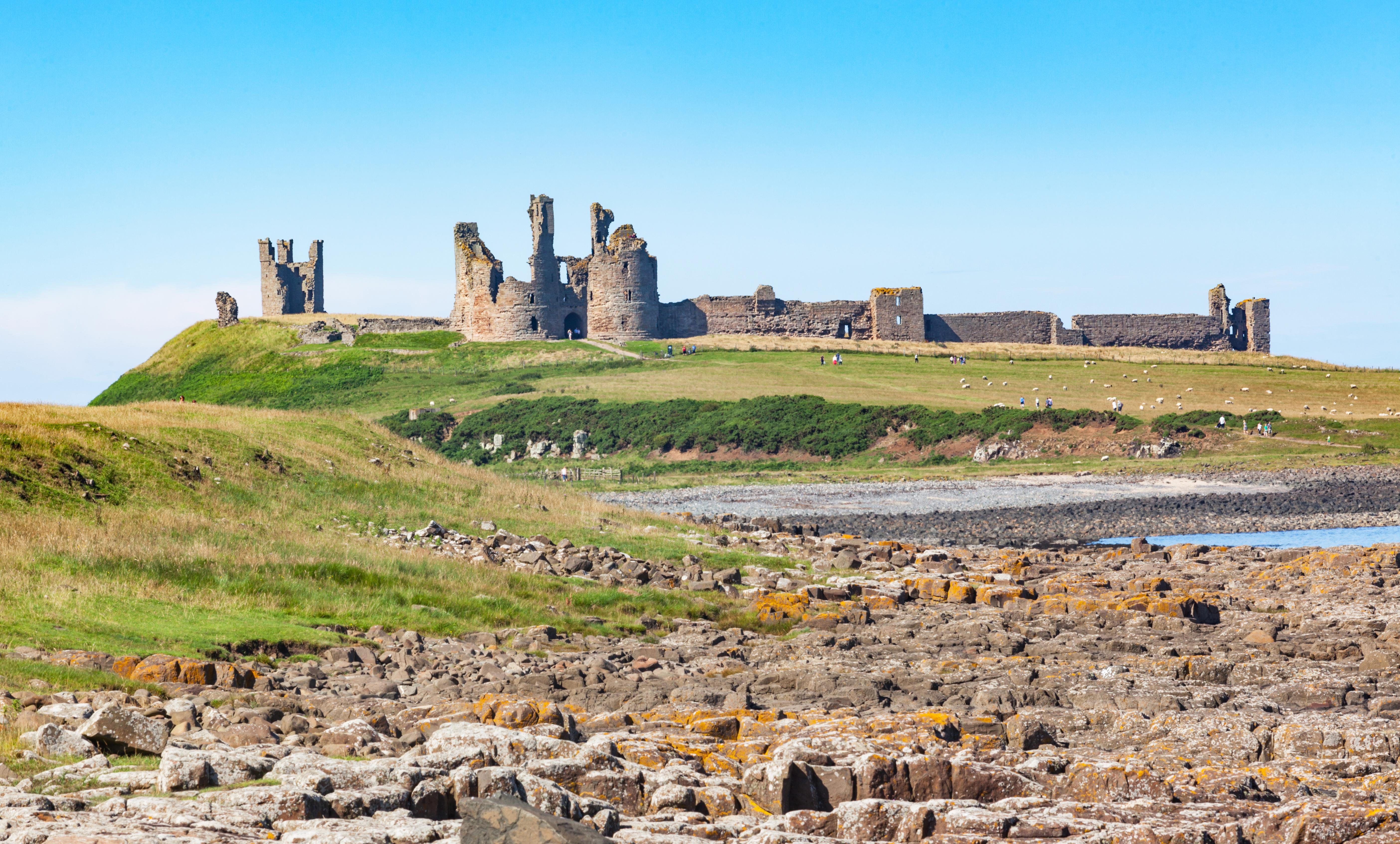
Perched on the untamed cliffs of the Northumberland coastline, the skeletal remains of Dunstanburgh Castle dominate a landscape where sea, sky, and moor converge in dramatic harmony. Built in the early 14th century by Thomas, Earl of Lancaster, this massive fortress was conceived as both a military bastion and a political statement against King Edward II. Its construction was as much about ambition as it was about defense—but history had other plans. The castle was never fully completed and was gradually abandoned, left to face centuries of neglect and the relentless fury of the North Sea. Today, the only way to reach Dunstanburgh is via a windswept footpath that cuts through sheep-dotted fields and rolling dunes, a walk that feels like entering another world. As you approach, the castle's ruined gatehouse and crumbling towers rise like ancient guardians above the coastal mist. Waves crash violently below its cliffs, and seabirds circle overhead, their cries echoing through the empty chambers. Time may have stripped Dunstanburgh of its might, but in its haunting solitude, it commands a majesty that no army ever could.
22. Caerlaverock Castle, Scotland – The Moated Triangle
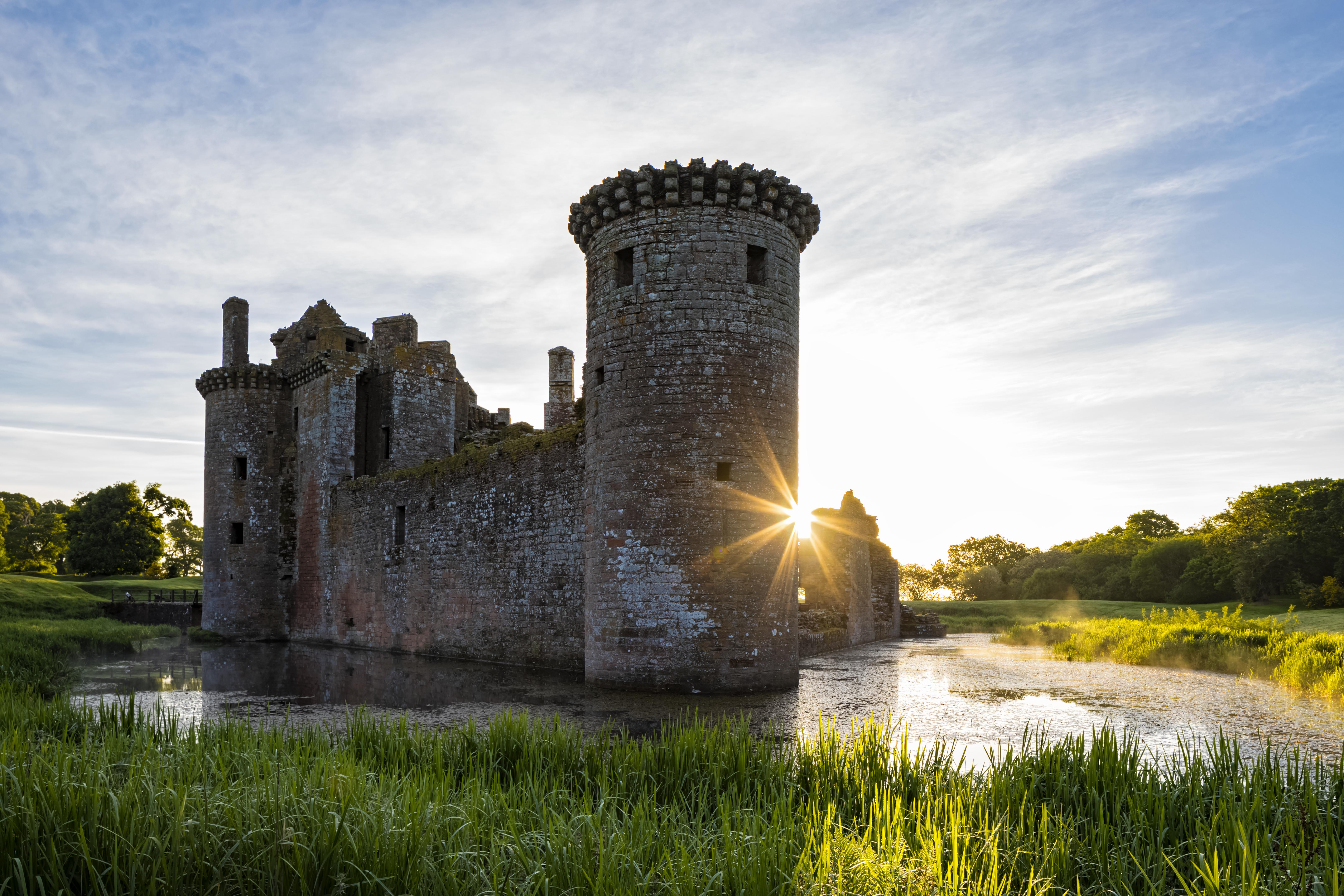
Nestled in the borderlands of Dumfries and Galloway, Caerlaverock Castle is one of Scotland’s most visually striking ruins—a rare triangular fortress encircled by a wide, water-filled moat. Originally constructed in the 13th century, it played a crucial role in the Anglo-Scottish wars, withstanding multiple sieges thanks to its formidable curtain walls and strategic location. Despite its martial past, the castle exudes an unexpected elegance: its red sandstone glows warmly in the shifting Scottish light, and its twin-towered gatehouse rises like something from a medieval romance. After being besieged and abandoned in the 17th century, Caerlaverock was left to weather the elements, its halls falling silent and its battlements succumbing to ivy and moss. Today, visitors cross a narrow footbridge to wander through echoing chambers and ruined towers, where fireplaces are carved into broken walls and spiral staircases lead to nowhere. Surrounding the castle, the lush wetlands have transformed the battlefield into a haven for wildlife, with herons, otters, and dragonflies now reigning where soldiers once stood. Equal parts architectural curiosity and storybook ruin, Caerlaverock is a place where the past seeps into every stone and the present feels suspended in time.
23. Ogrodzieniec Castle, Poland – Ghosts of the Highlands
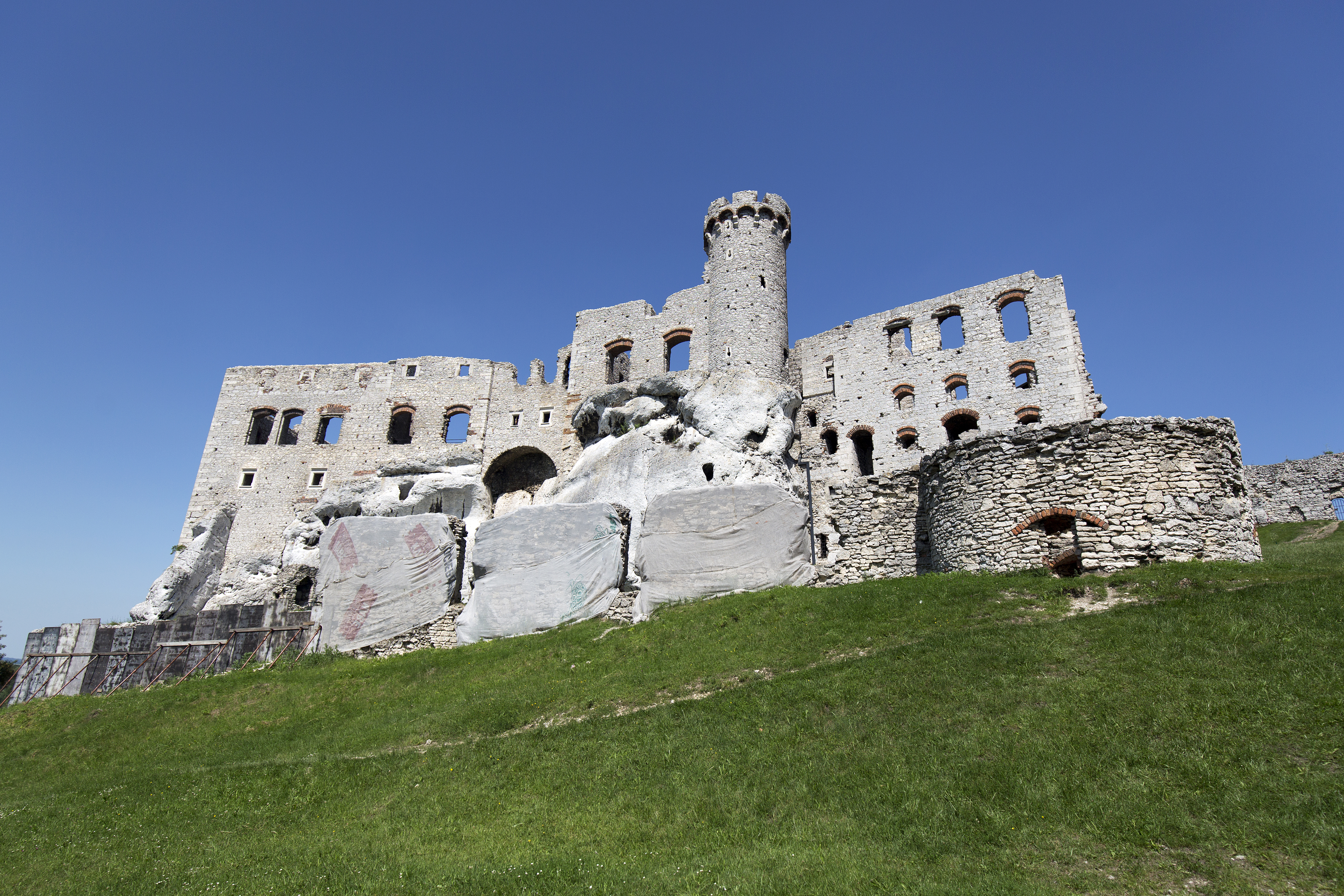
Standing atop a towering limestone outcrop in Poland’s Kraków-Częstochowa Upland, Ogrodzieniec Castle cuts a striking silhouette against the sky—its skeletal remains a testament to centuries of both grandeur and destruction. Built in the 14th century by the wealthy Włodek Sulimczyk family, the fortress was expanded into a mighty Gothic stronghold, complete with defensive bastions and lavish halls. But Ogrodzieniec’s fortunes faltered in the 17th century, when Swedish invasions—part of the brutal Deluge—left it in ruin. Since then, nature and legend have reclaimed it. By day, the castle is a dramatic playground for explorers, with towering walls, rooftop walkways, and panoramic views of Poland’s Jurassic landscape. At night, however, it takes on an entirely different character. Locals speak of the “Black Dog of Ogrodzieniec,” a phantom hound with glowing red eyes said to prowl the ruins, guarding the treasure of its long-dead masters. Beneath the arches and in the moonlit courtyards, the air brims with mystery. Whether you come for the history, the views, or the thrill of a ghost story brought to life, Ogrodzieniec Castle delivers an experience as unforgettable as its jagged silhouette.
24. Château de Saint-Ulrich, France – The Overlook of Forgotten Lords

Towering above the Alsatian town of Ribeauvillé in northeastern France, the Château de Saint-Ulrich is a majestic ruin that seems plucked from the pages of a medieval epic. Built in the 11th century by the Lords of Ribeaupierre, it once stood as a strategic sentinel over the Vosges Mountains and the Rhine Valley trade routes. Over centuries, the castle expanded with Romanesque towers, Gothic halls, and fortified bastions—but by the 17th century, it was abandoned, left to the forest and the shifting fortunes of time. Today, moss carpets its stone stairways and pine trees crowd its inner courtyards, but much of the castle’s massive structure remains. Visitors who make the short but steep hike from Ribeauvillé are rewarded with breathtaking views stretching across vineyards, valleys, and distant peaks. Standing among its weathered ramparts, it's easy to imagine banners fluttering in the wind and armored figures patrolling the walls. With its haunting atmosphere and commanding presence, Château de Saint-Ulrich is one of France’s most photogenic—and underrated—abandoned fortresses, a hidden gem for castle hunters and history lovers alike.
25. Montfort Castle, Israel – Crusader Shadows
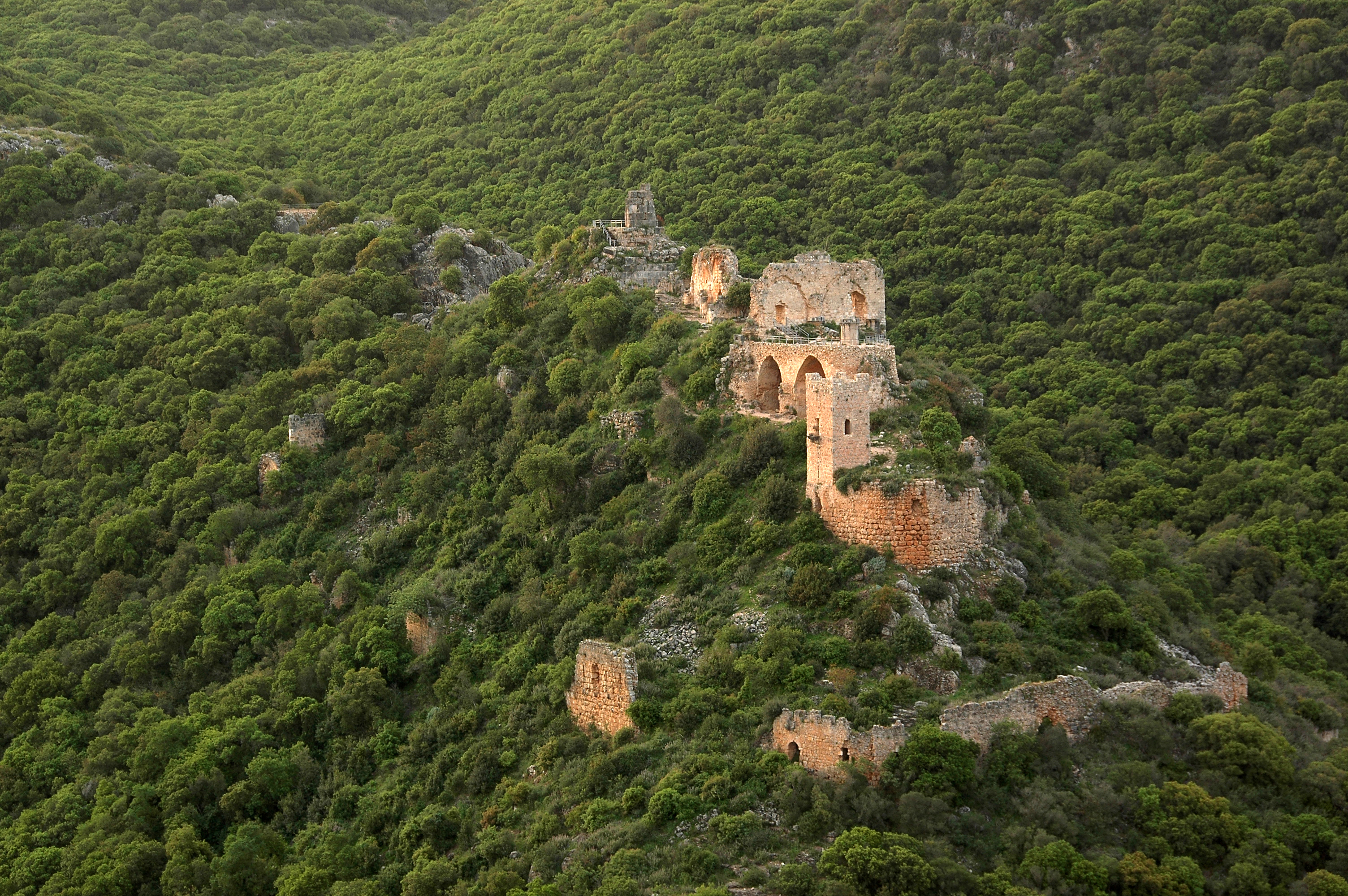
Hidden in the wooded hills of Israel’s Upper Galilee, Montfort Castle is a crumbling yet evocative relic of the Crusader era—its name derived from the French “mount of strength.” Built in the 13th century by the Teutonic Knights after their split from the Templars, the castle served as both fortress and administrative headquarters for this elite military order. Perched atop a narrow, rugged ridge and protected on three sides by steep ravines, Montfort was practically impregnable—until the Mamluks conquered it in 1271 and left it in ruin. What remains today are jagged walls, a collapsed donjon, and archways now open to the elements. But what Montfort lacks in grandeur, it makes up for in atmosphere. The hike to reach it winds through dense oak forest and offers glimpses of wildflowers, hidden springs, and sweeping views of the Nahal Kziv valley below. Standing in the shadow of its ruins, it’s easy to picture knights pacing the ramparts, merchants arriving with goods, or banners fluttering in the wind. Montfort Castle isn’t just a destination—it’s a historical echo chamber, where every stone murmurs the secrets of crusades, conquests, and faith-fueled dreams left to the forest’s care.
Preserving the Magic of Abandoned Castles
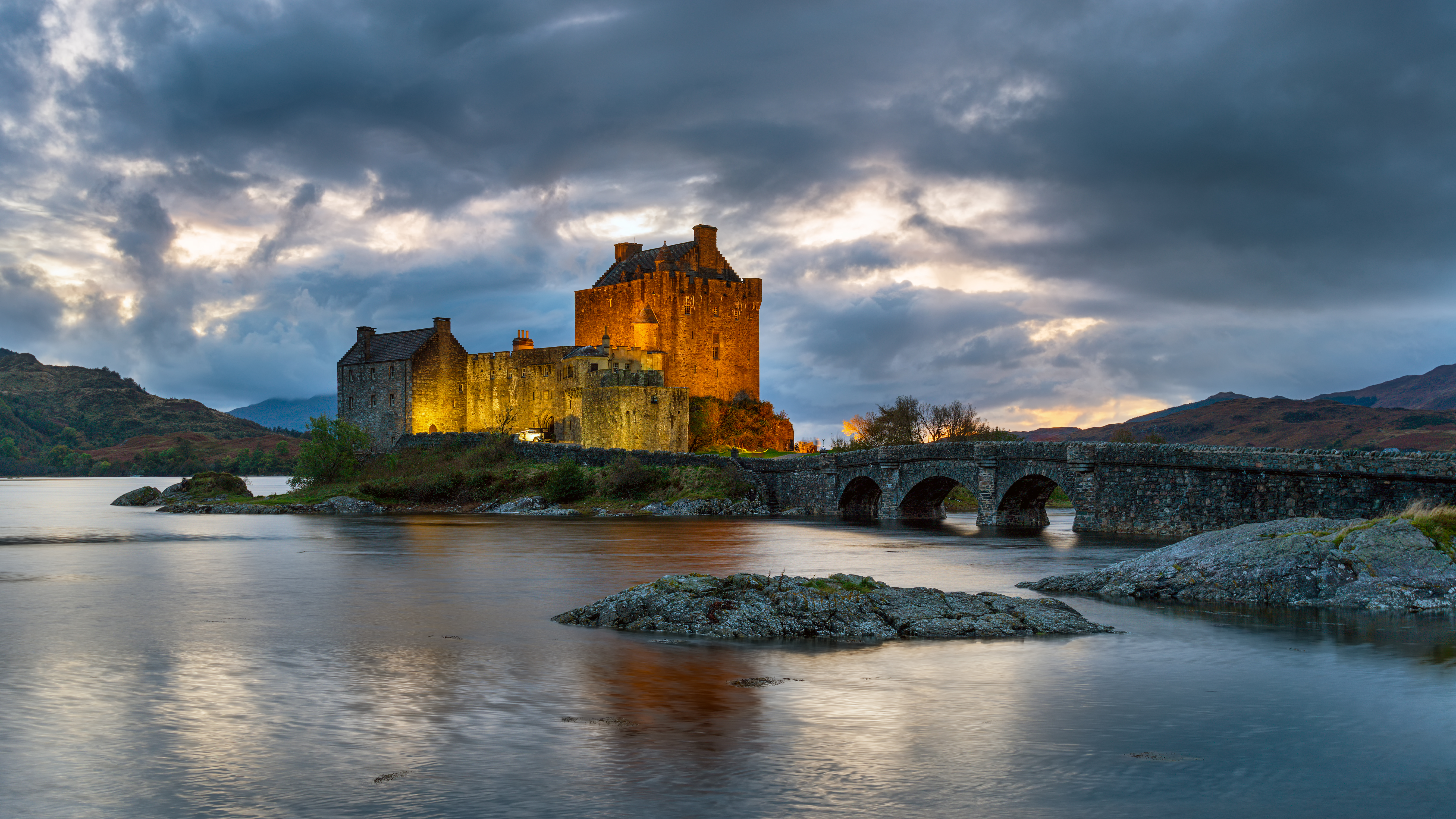
Though time may have stolen their former splendor, these abandoned castles remain powerful monuments to history, mystery, and the human spirit. Their faded frescoes, weathered battlements, and ivy-clad towers stand as silent witnesses to the empires that built them, the battles that shaped them, and the centuries that have passed them by. Some are being reclaimed by nature, while others are slowly being restored by those determined to preserve their magic for future generations. Yet, even in decay, these castles continue to capture our imaginations, reminding us that some places never truly fade away. Whether you dream of exploring forgotten corridors, capturing their haunting beauty through a camera lens, or simply losing yourself in the stories they hold, these fortresses of the past will always have a place in our collective memory. They are more than stone and mortar; they are the keepers of legends, the guardians of history, and the remnants of a world that still lingers in the echoes of their crumbling walls.

